Ford GT40 Pebble Beach Concours d'Elegance, 2016
Ford GT40 Pebble Beach Concours d'Elegance, 2016 Photos and Stories.
Ford GT40 Concours d'Elegance, Car Show, 2016-08-21, Pebble Beach Lodge, Pebble Beach, California, US
BACK TO - - - - List of Fords
Ford GT40 Pebble Beach Concours d'Elegance, 2016
Ford GT40's at 66th Pebble Beach Concours d'Elegance
50Th year since the Ford GT40' won at Le Mans. Pebble Beach lined up 17 cars fo all to enjoy.

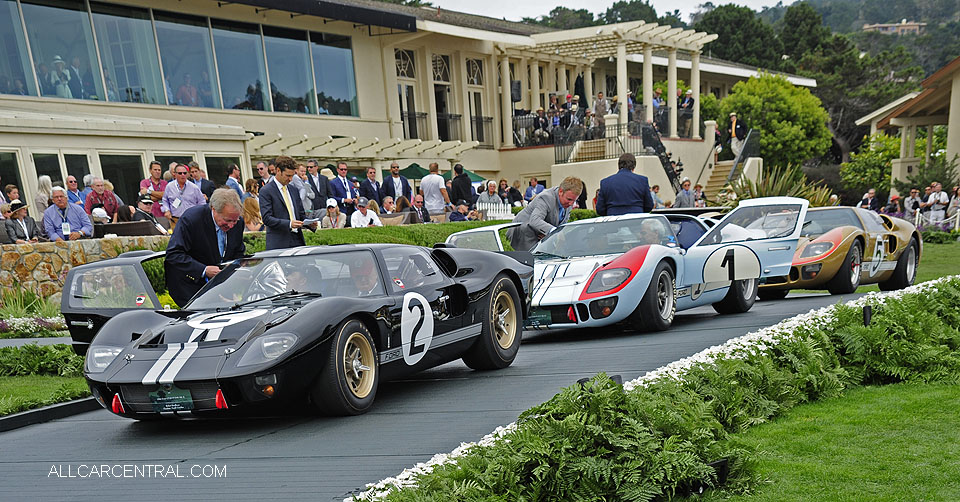
Ford GT40 P-1046 Mark II 1966; Ford GT40 P-1015 Mark II 1965; Ford GT40 P-1016 Mark II 1965
The 3 cars in thier finishing order of the 1966 1,2,3 finish. This however is not how they crossed the line. Following Ford's order, all three cars drove across the finish line side by side.

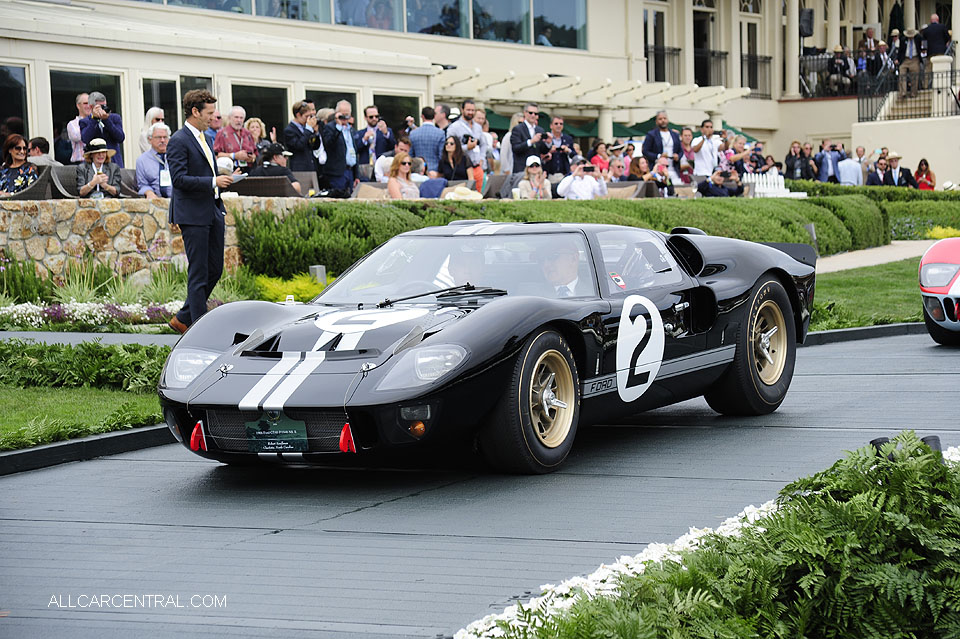
Ford GT40 P-1046 Mark II 1966
Placed First at Le Mans 1966 in the 1,2,3 finish. Bruce McLaren and Chris Amon
Following its memorable win, the car passed to Holman & Moody
and was entered in the 24 Hours of Daytona in 1967, driven by Lloyd
Ruby and Denny Hulme. After running amongst the race leaders,
Ruby crashed on his 300th lap and P/1046’s racing days were over.
Once repaired, this famous car was shipped around the United
States as part of a Ford marketing tour. It was later rebuilt as a roadgoing
supercar, complete with a gold metal-flake paint job.
Source: Pebble Beach Concours d'Elegance

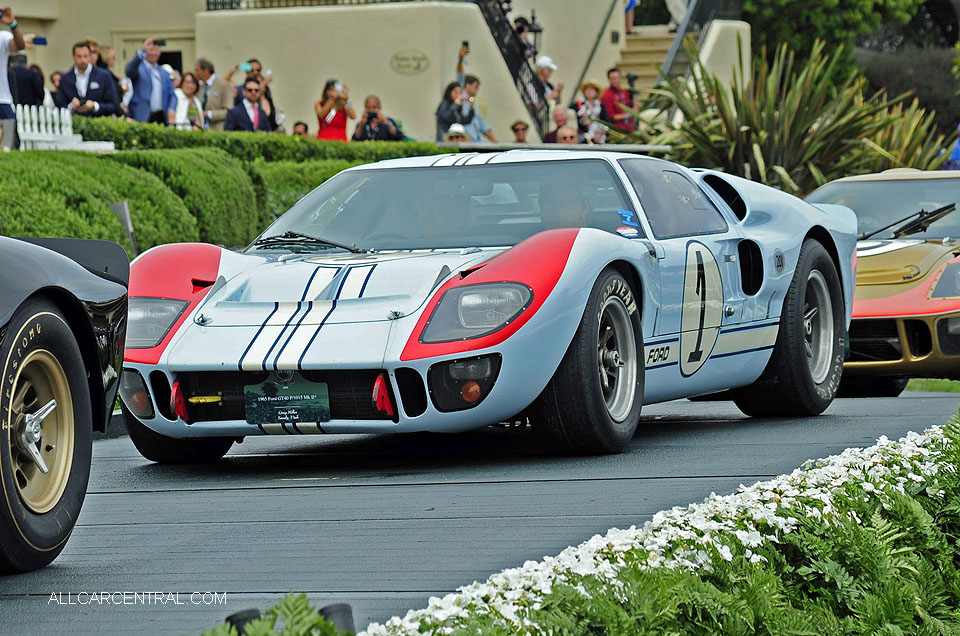
Ford GT40 P-1015 Mark II 1965
Placed Second in the 1,2,3 finish. This car ran first untill the last lap but slowed for the 1-2-3 finish as per "Ford Co." Having started infront of P-1046, P-1046 was decleared the winner as it had traveled father in the 24 hr. time
It made a victorious debut at the first 24-hours
race held at Daytona, in February 1966. Following its magnificent
win there, at the hands of Ken Miles and Lloyd Ruby, the car crossed
the Atlantic to compete in the 24 Hours of Le Mans, where Ken Miles,
then partnered with Denny Hulme, hoped to win the long distance
race. This car led the race through many of the closing laps. Then,
following a Ford decision to stage a photo finish, Miles slowed -
and his GT40 crossed the line alongside the GT40 driven by Bruce
McLaren/Chris Amon and ahead of the GTO of Ronnie Bucknum/
Dick Hutcherson. Officially it finished in 2nd because the GT40 driven
by McLaren and Amon had driven farther at that point, having
started farther back. Following Le Mans, this Mk II was raced again
only twice, once again at Daytona where it did not finish and once
again at Le Mans where it crashed. Then it was retired and put into
storage at Holman & Moody.
Source: Pebble Beach Concours d'Elegance

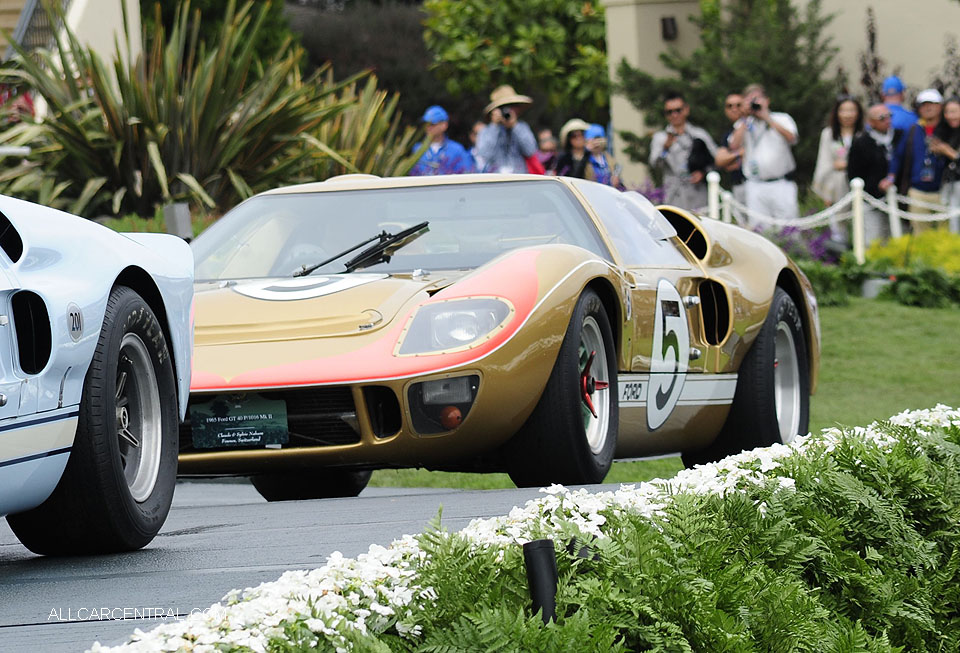
Ford GT40 P-1016 Mark II 1965
Placed Third at Le Mans 1966 in the 1,2,3 finish. Ritchie Ginther and Ronnie Bucknum
This car was built in 1965 and shipped as a bare chassis to Shelby
American in Los Angeles, where it was completed in January 1966.
That February, driven by Richie Ginther and Ronnie Bucknum, it entered its first race, the 24 Hours of Daytona, but did not finish
due to issues with the gearbox. After racing at Sebring in March and
finishing 12th at the hands of A. J. Foyt and Bucknum, it was handed
over to Holman & Moody, who took it to France for the 24 Hours of
Le Mans in June. This proved to be its finest hour: driven by Ronnie
Bucknum and Dick Hutcherson, it finished a close 3rd to the GT40s
that placed 1st and 2nd in a famed photo finish. Its final race was back
at the 24 Hours of Daytona in 1967, driven by Mark Donohue and
Peter Revson, where gearbox issues led to another DNF. In 1970 the
car was donated to the Harrah Museum in Nevada where it resided
for many years.
Source: Pebble Beach Concours d'Elegance

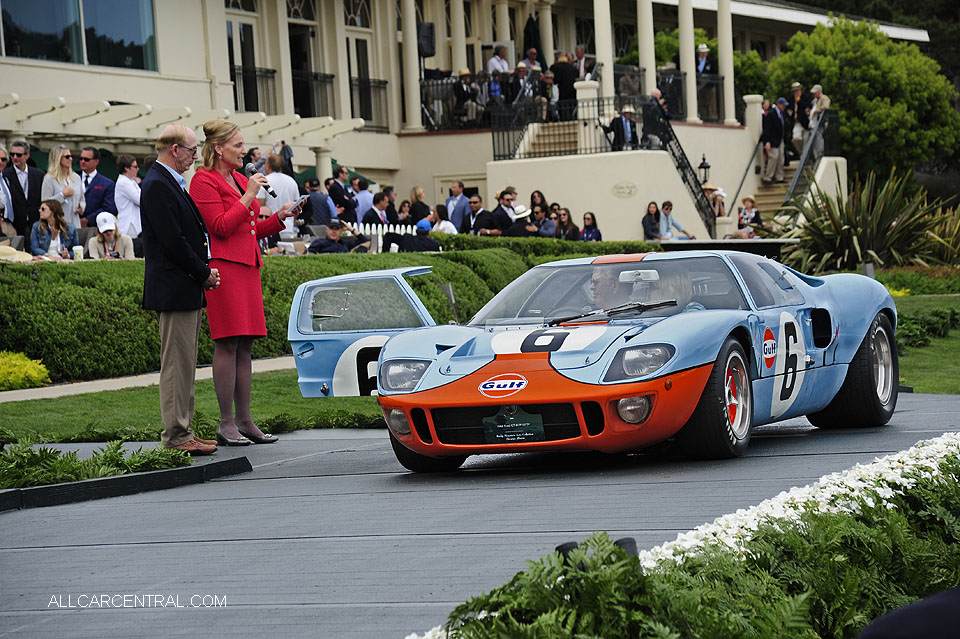
Ford GT40 P-1075 1968
P-1075 Wins 24hr of Le Mans in 1968 and 1969
This Ford GT40 (P/1075) is one of the most important GT40s ever
built, having won the 24 Hours of Le Mans in 1968 and 1969. It is
one of only two race cars in history to record consecutive wins there.
For the 1968 Le Mans race, the regulations were changed and a 3-liter
limit was imposed on all prototypes, eliminating the 427-cubic-inch
Ford engines. Fortunately, the team at J.W. Automotive Engineering,
under the direction of John Wyer, saw the potential of the GT40 as
a Group 4 sports car, and they built two lightweight GT40s with
carbon-fiber reinforced bodywork that was virtually identical to the
original GT40 Mk I. As a result, this car, driven by Pedro Rodriguez
and Lucien Bianchi, scored a resounding win at Le Mans in 1968.
With the GT40 win, Ford was again at the top—and, incredibly, this
GT40 repeated its Le Mans win in 1969 driven by Jacky Ickx and
Jackie Oliver.
Source: Pebble Beach Concours d'Elegance

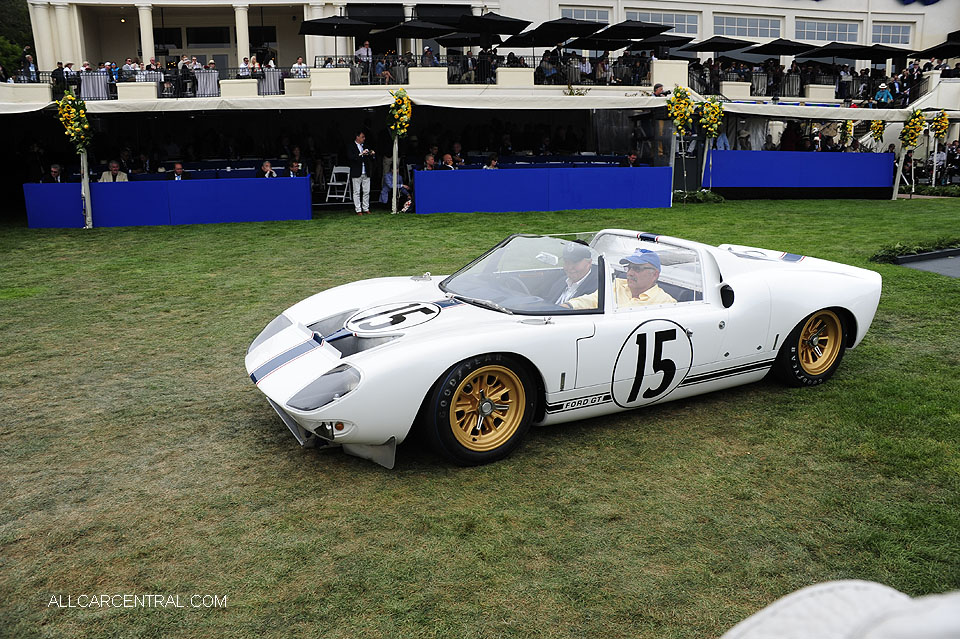
Ford GT-109 Roadster 1965
Five Ford GT40 roadsters were built by Ford Advanced Vehicles in
England, and this roadster (GT/109) is one of two steel-bodied
prototypes delivered to Shelby American for testing in March 1965.
This is the only GT40 roadster to have a race history; it ran at Le Mans
in 1965, entered by Ford of France with drivers Maurice Trintignant
and Guy Ligier. As with all the GT40s at Le Mans that year, it retired.
Then it was shipped back to Shelby American, and the roadster
project was shelved because Ford decided to focus its development
on the coupe. After three years of use as a test car for various GT40
modifications, the roadster was spotted in a dusty warehouse by
Dean Jeffries, and he acquired it from Shelby.
Source: Pebble Beach Concours d'Elegance

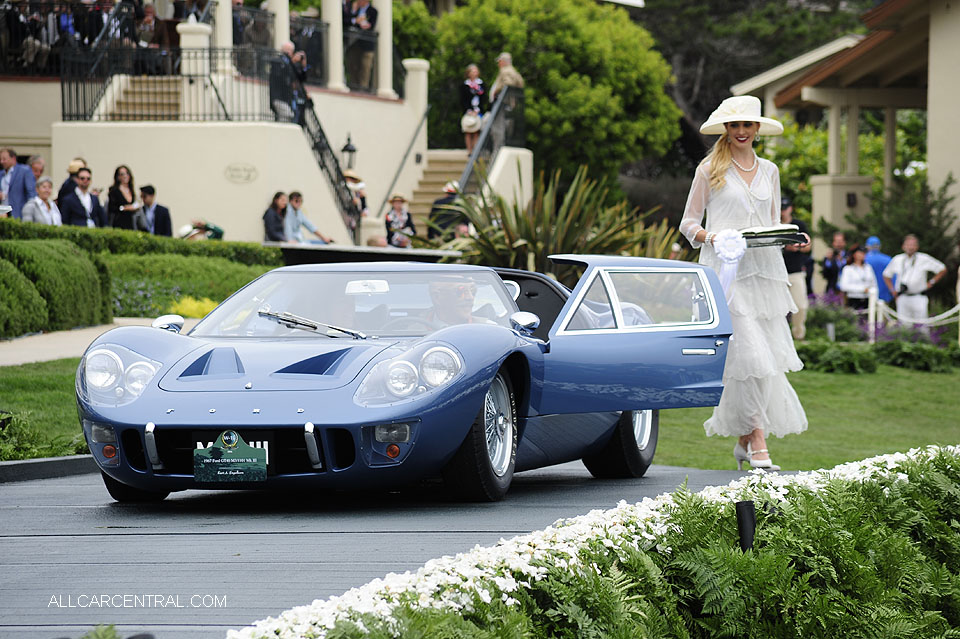
Ford GT40 M3-1101 Mark III 1967
This GT40 Mk III (M3/1101) is the road-going prototype shown at the
1967 New York Auto Show. The car features the distinctive Mk III front
fender with four headlights and the longer alloy rear end that was
bolted onto the standard Mk I body. To add to its image as a road car,
it was also fitted with a luggage box and Borrani wire wheels. Despite
its road-going specification, the car competed for a number of years
in international historic races. A recent restoration has returned the
car to its New York Auto Show appearance.
Source: Pebble Beach Concours d'Elegance

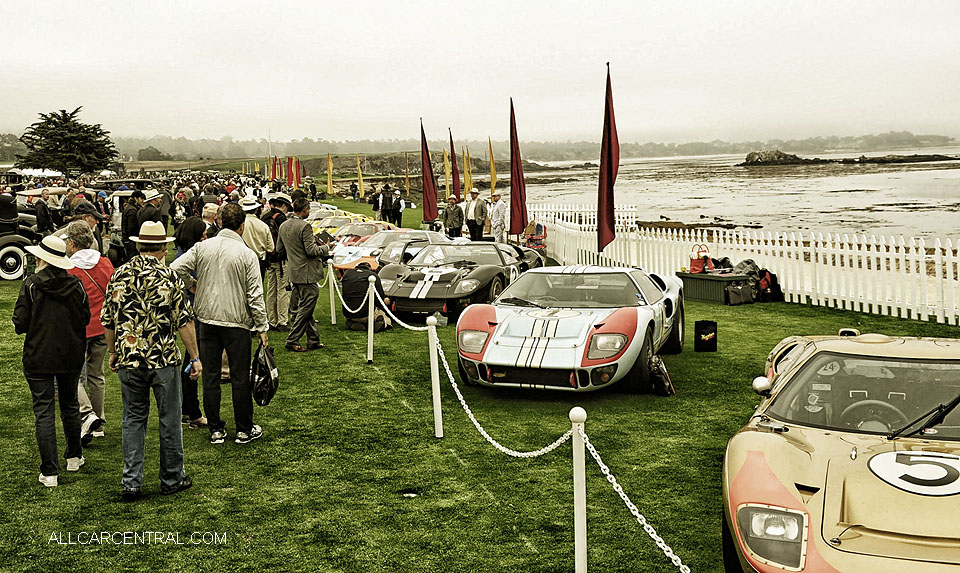
Pebble Beach Concours 2016

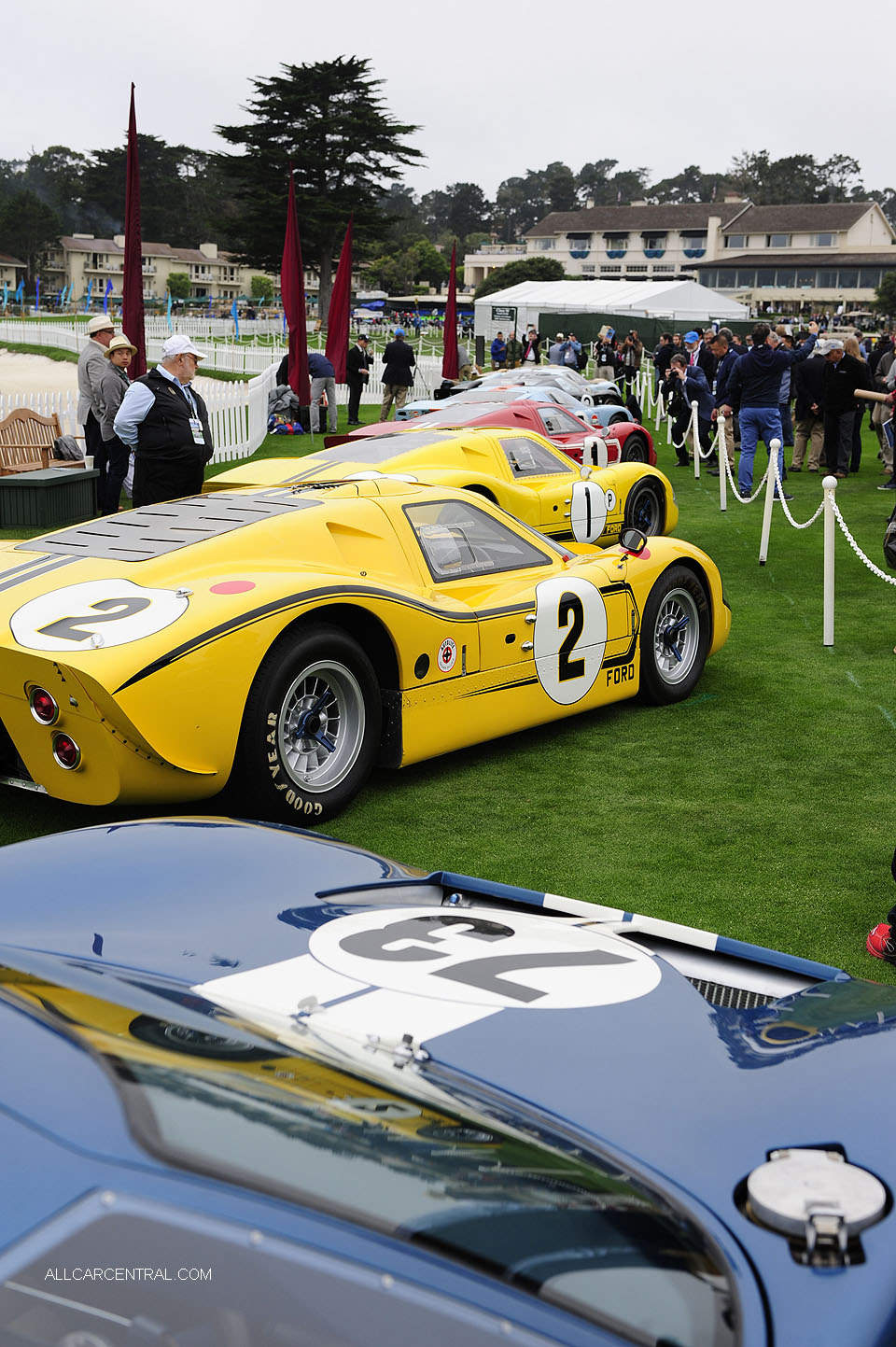
Pebble Beach Concours 2016

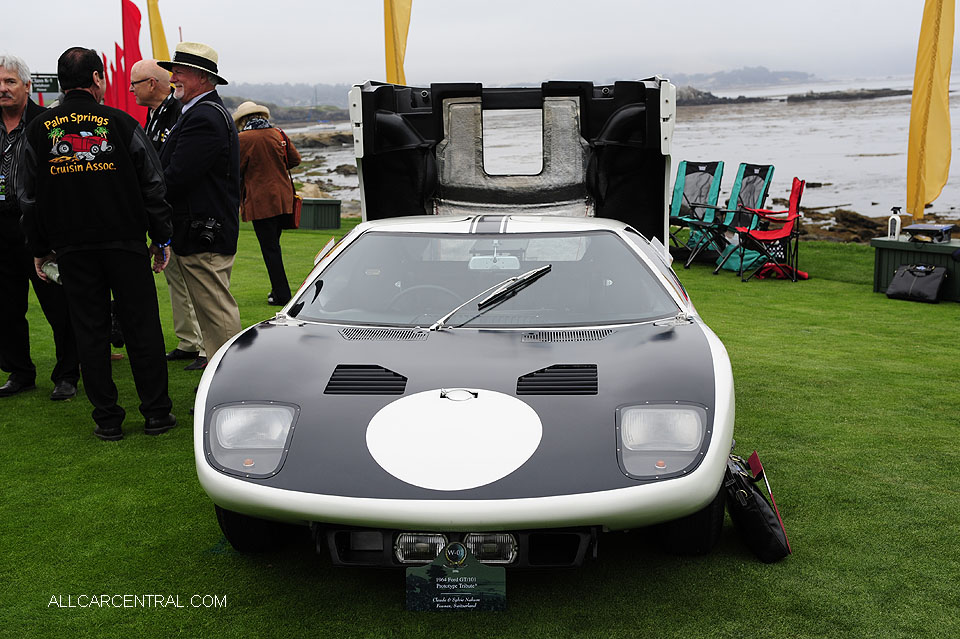
Ford GT-101 Prototype Tribute 1964
This car is an exact re-creation of the first-ever Ford GT40, then called
simply the GT, that was originally built by British specialists Abbey
Panels and Harold Radford. After development work by Ford at Dearborn
the GT (GT/101) was shown to the press at the 1964 New York Auto
Show before it ran in the 1964 Le Mans trials driven by Jo Schlesser.
During the trials, that first prototype was crashed—as was the second
prototype (GT/102) driven by Roy Salvadori. After Le Mans, GT/101
was scrapped, and the GT design was modified and became the
GT40 Mk I. This car was built from the original drawings and photos
of GT/101. Over a two-year period, the engine was built from scratch
with the assistance of Ford Heritage and Ford’s race engineer Mose
Nowland, who had worked on the original GT40 engines
Source: Pebble Beach Concours d'Elegance

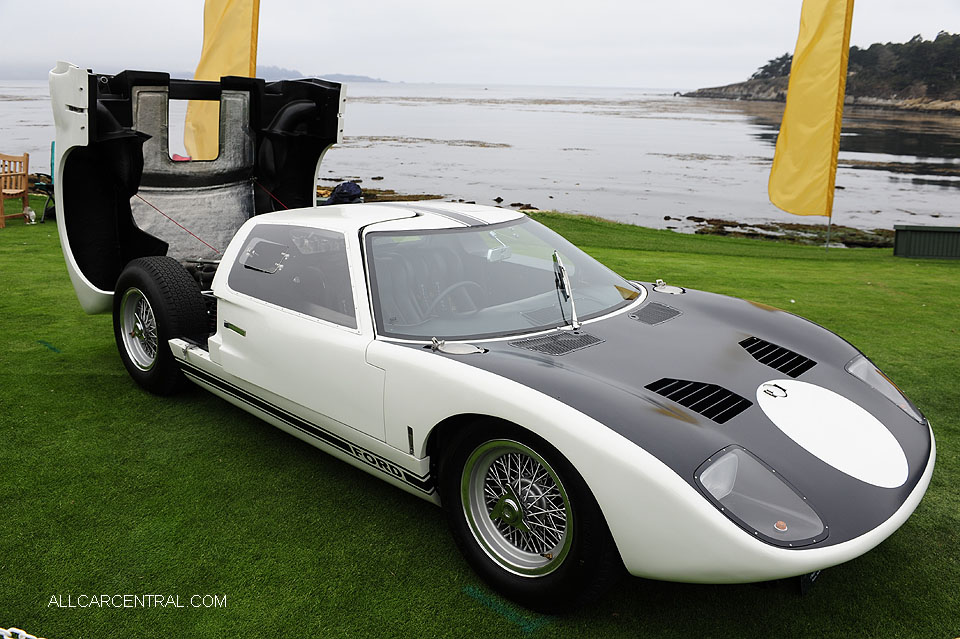
Ford GT-101 Prototype Tribute 1964

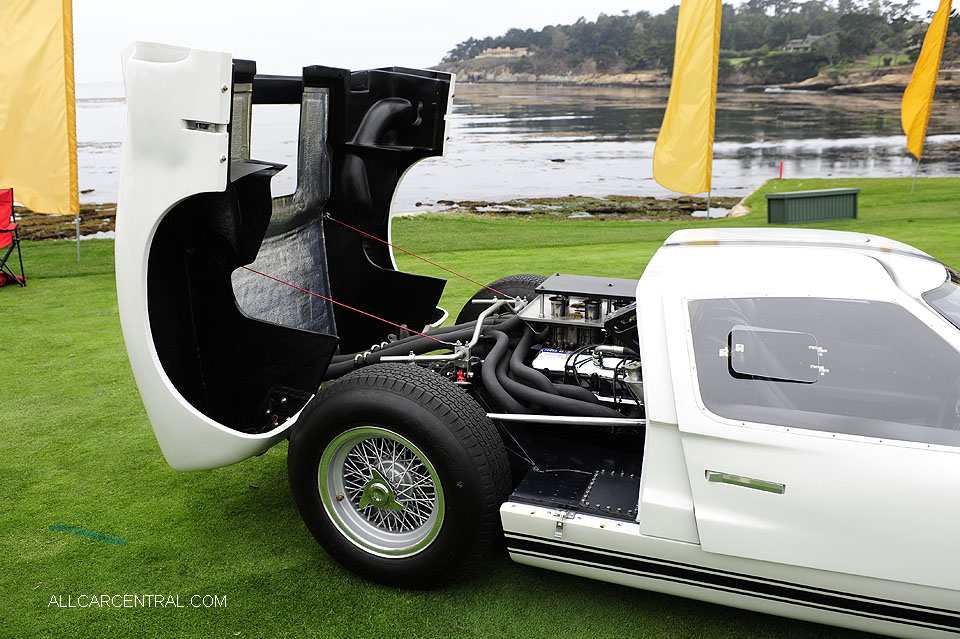
Ford GT-101 Prototype Tribute 1964

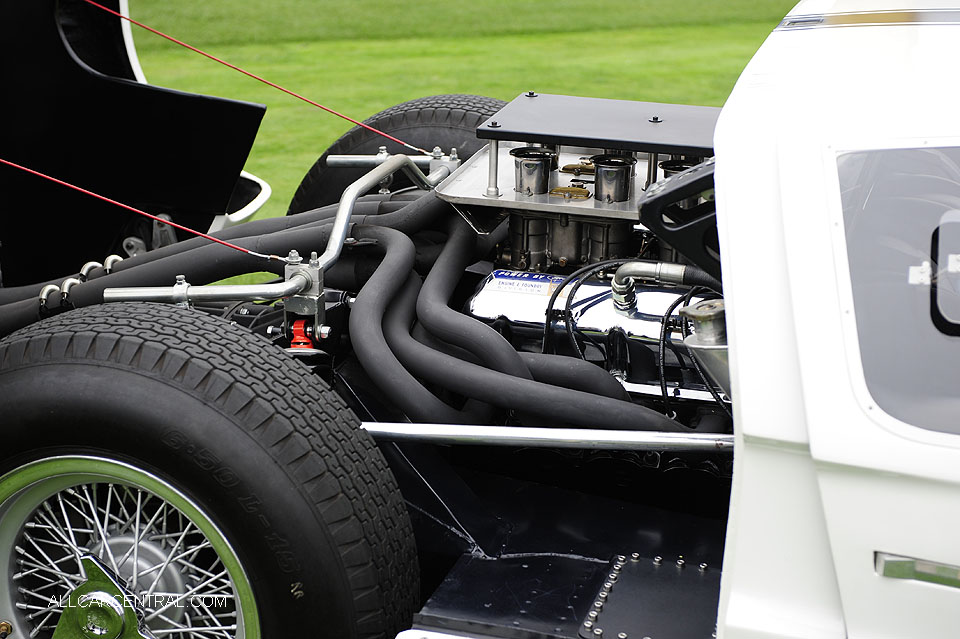
Ford GT-101 Prototype Tribute 1964

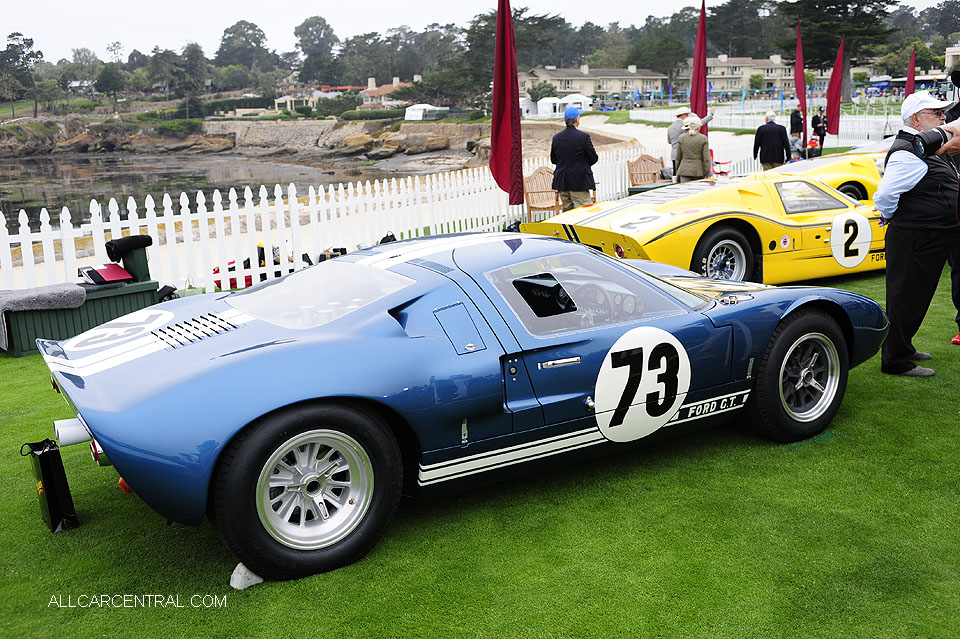
Ford GT-103 Prototype 1964
Completed in June 1964, this Ford GT40 prototype (GT/103) is the
earliest known GT40 chassis in existence. At the end of the 1964
season, after months of development and disappointing race results
at Le Mans, Reims and later Nassau Speed Week, the third and fourth
GT40 prototypes (GT/103 and GT/104) were sent to Carroll Shelby
for further tuning and preparation. The cars were then entered
in the opening race of the 1965 season, the Daytona 2000 km
Continental, and it soon became clear that Shelby’s development work had made a difference; GT/103, with Ken Miles and Lloyd Ruby
behind the wheel, raced into the history books as the first GT40 to
score a victory. Later that year, GT/103 finished 2nd at Sebring and 3rd at
Monza driven by Bruce McLaren and Ken Miles. It was then fitted with
a 325-cubic-inch engine for a race at the Nürburgring driven by Phil
Hill. After this race, GT/103 was officially retired from the factory tea
Source: Pebble Beach Concours d'Elegance

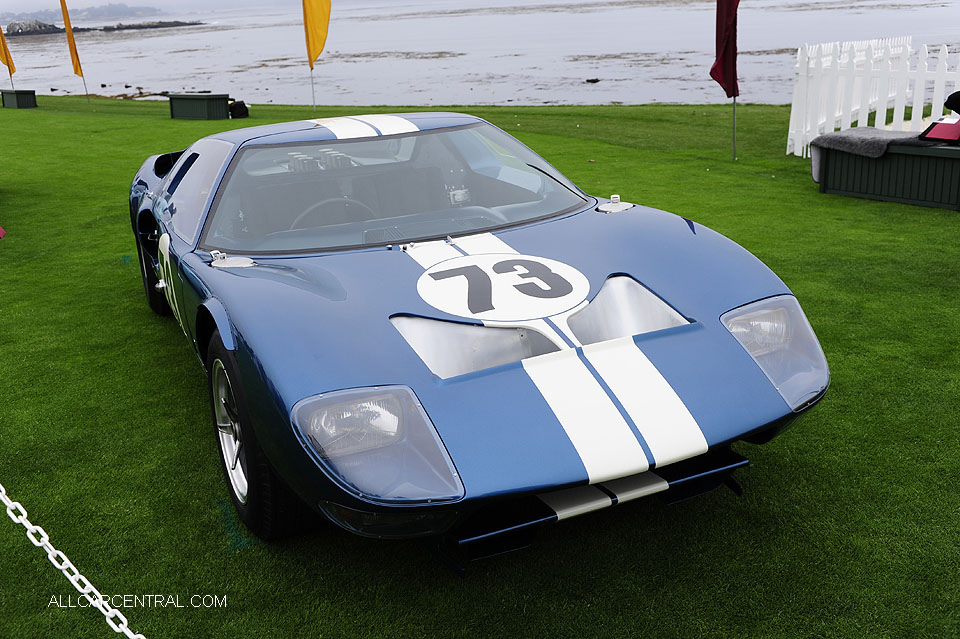
Ford GT-103 Prototype 1964

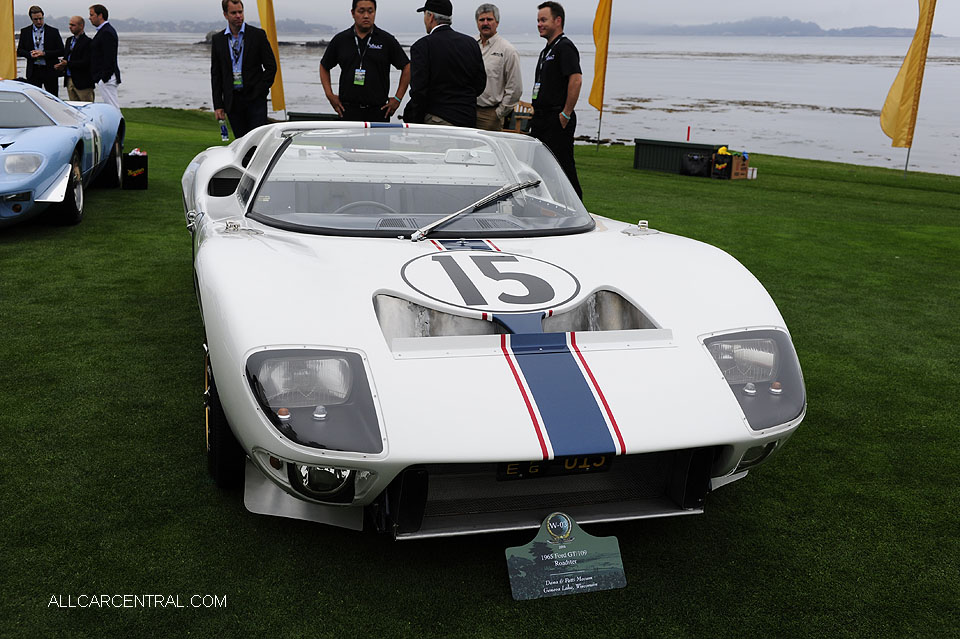
Ford GT-109 Roadster 1965
Five Ford GT40 roadsters were built by Ford Advanced Vehicles in
England, and this roadster (GT/109) is one of two steel-bodied
prototypes delivered to Shelby American for testing in March 1965.
This is the only GT40 roadster to have a race history; it ran at Le Mans
in 1965, entered by Ford of France with drivers Maurice Trintignant
and Guy Ligier. As with all the GT40s at Le Mans that year, it retired.
Then it was shipped back to Shelby American, and the roadster
project was shelved because Ford decided to focus its development
on the coupe. After three years of use as a test car for various GT40
modifications, the roadster was spotted in a dusty warehouse by
Dean Jeffries, and he acquired it from Shelby. The roadster remained
with Jeffries until 2013 when its current owner became its custodian.
Source: Pebble Beach Concours d'Elegance

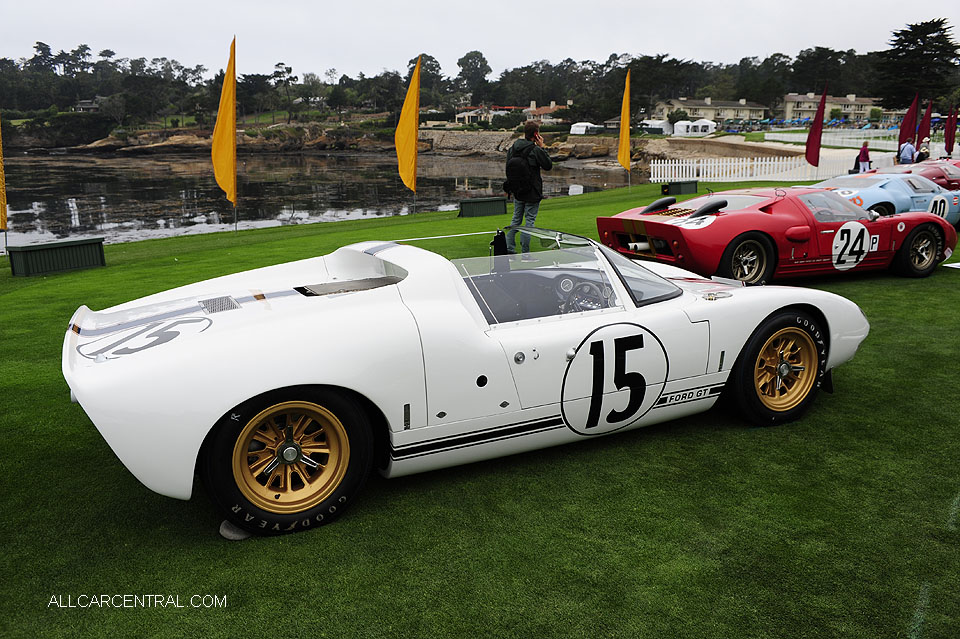
Ford GT-109 Roadster 1965

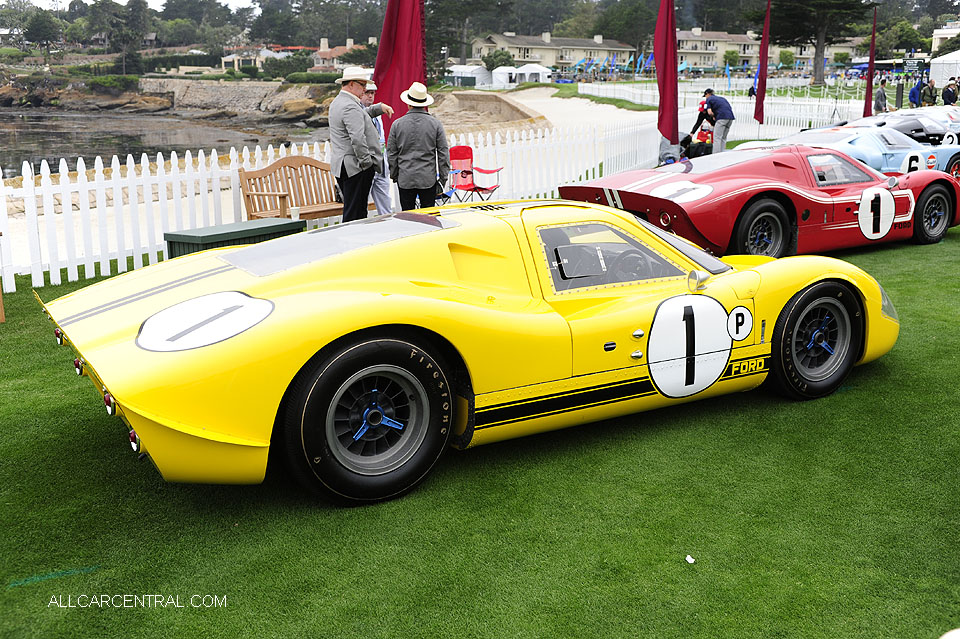
Ford GT40 J-4 Mark IV 1967
The first J-Car, with a lightened chassis and fiberglass body, was
completed in March of 1966, and it made its first public appearance
at the Le Mans Trials where it recorded the fastest time. The J-Car
project was put on hold while development concentrated on the
GT40 Mark II, but after Ford’s 1-2-3 win at Le Mans in 1966, Ford
revived the J-Car to compete against Ferrari’s 330 P4. Chassis J-4 was
prepared by Ford engineers with a new body, incorporating a longer
front nose, a Can Am–style tail section and a new roof line with a
rear window. During this transformation the J-Cars officially became
known as the GT40 Mark IV. This Mk IV (J-4) debuted at Sebring in
April 1967, where it led from the start and took victory with Bruce
McLaren and Mario Andretti behind the wheel. Four Mk IVs were
entered for the 24 Hours of Le Mans in 1967, and that race was won by a J-5 driven by Dan Gurney and A. J. Foyt. J-4 had been kept in the
United States and was used for testing at Daytona before being put
into storage. It was sold to the first of several private owners in 1970.
Source: Pebble Beach Concours d'Elegance

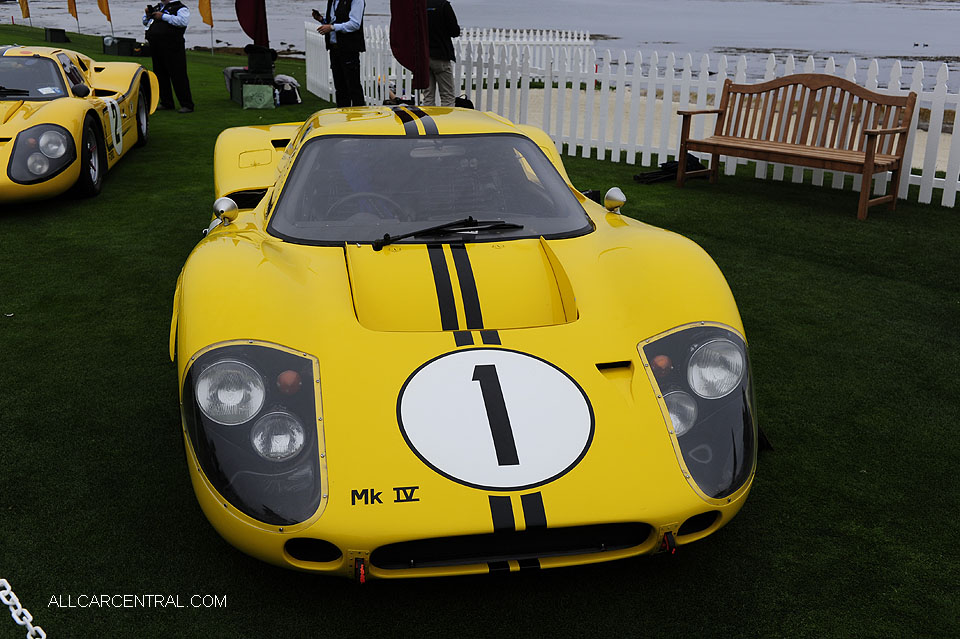
Ford GT40 J-4 Mark IV 1967

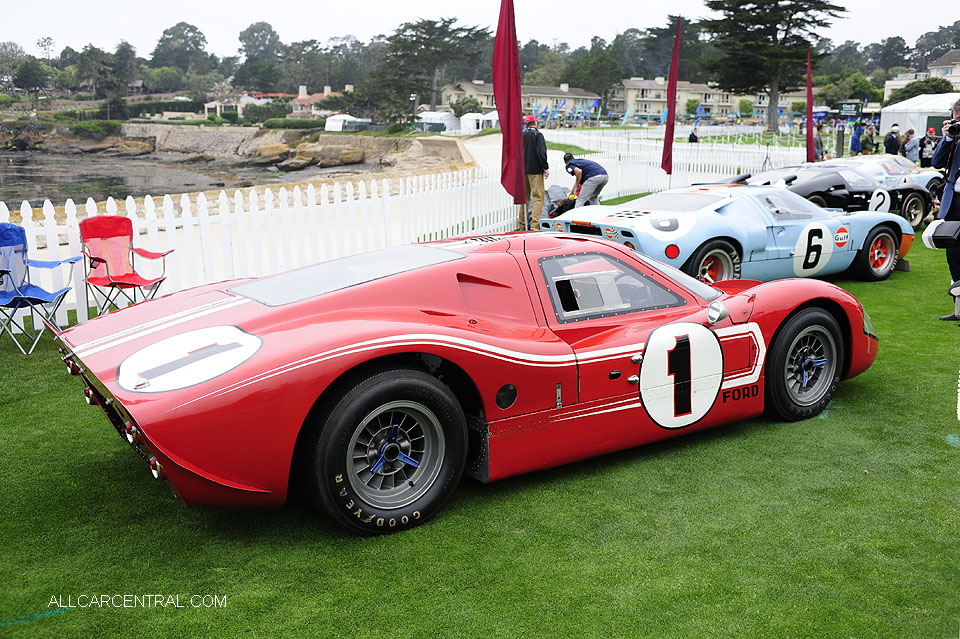
Ford GT40 J-5 Mark IV 1967
This Ford Mk IV (J-5), driven by Dan Gurney and A. J. Foyt, won the
24 Hours of Le Mans in 1967. The car was a continuation of Ford’s
original GT40/J-Car program of 1964, which was resurrected in
order to replicate the success of Ford’s grand win by a trio of Mk IIs
at the 24 Hours of Le Mans in 1966. This Mk IV uses a strengthened
chassis and a NASCAR-style steel roll cage, and the body is more
conventional than the first “bread-van” J-Car. It also has a lower tail
to improve airflow. It is fitted with the same 427-cubic-inch V8 that
drove the winning trio of Mk IIs in 1966. Despite being 600 pounds
heavier than its rival, the Ferrari 330 P4, this Mk IV eventually crossed
the line three laps ahead of it. Following the 24-hour race, the car
was shown at the Auto Expo International in September of 1967,
before going to Dearborn, where it was donated to The Henry Ford
museum in 1972.
Source: Pebble Beach Concours d'Elegance

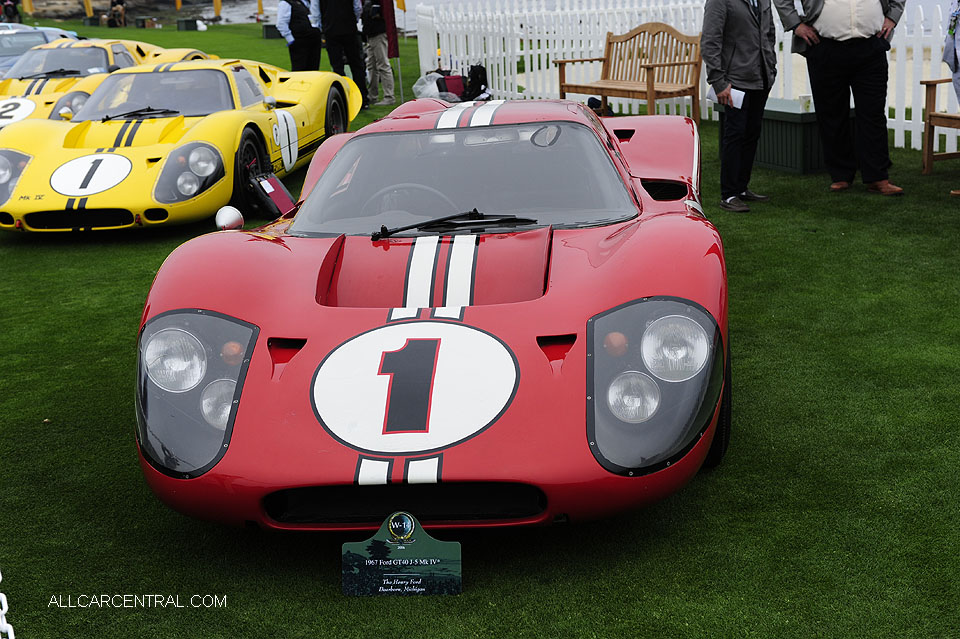
Ford GT40 J-5 Mark IV 1967

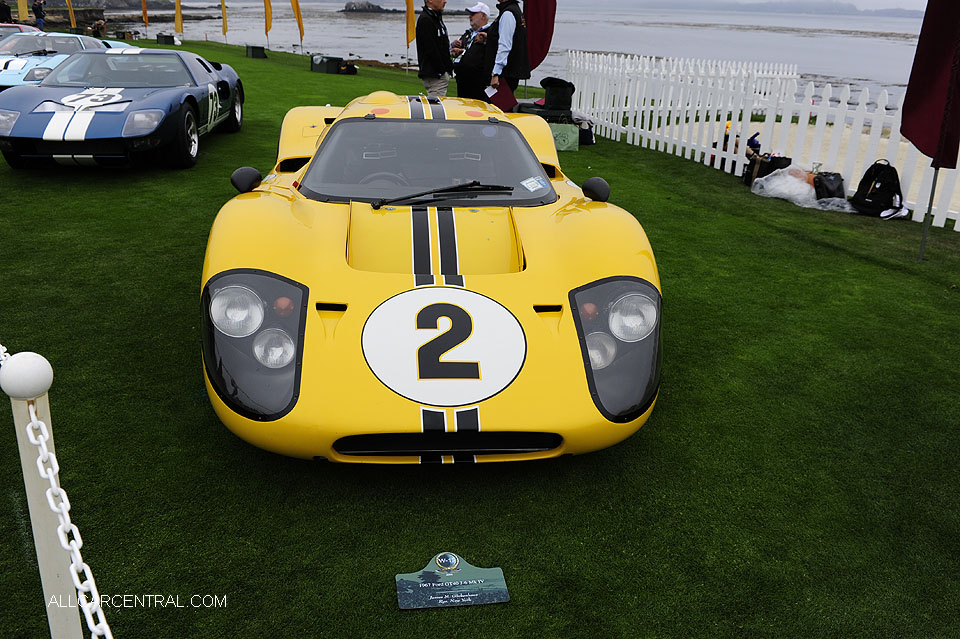
Ford GT40 J-6 Mark IV 1967
This is the Mk IV chassis (J-6) that was driven by Bruce McLaren and
Mark Donohue to 4th place at the 24 Hours of Le Mans in 1967. After
Dan Gurney and A. J. Foyt’s historic victory that year in its twin, the
bubble-roofed bright-red J-5, all the other J-Cars were returned to
Shelby American to be fitted with a bubble roof and painted red and
were paraded around the United States on various publicity tours.
This J-Car was acquired by Foyt in 1972. In1990, after it had passed
through several other hands, its current owner bought the car and
returned it to its proper yellow paintwork as it was seen at Le Mans,
its only race.
Source: Pebble Beach Concours d'Elegance

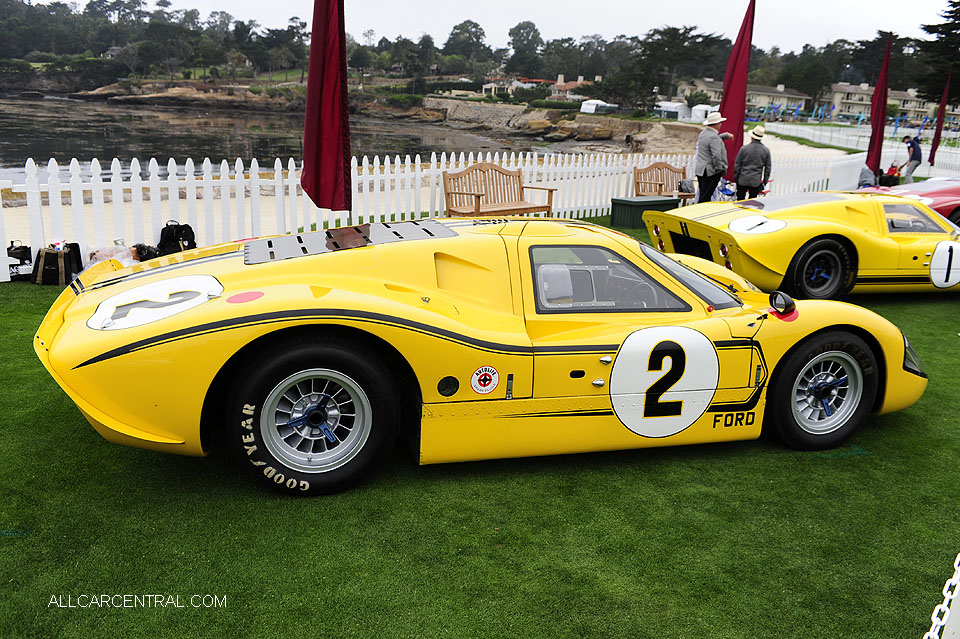
Ford GT40 J-6 Mark IV 1967

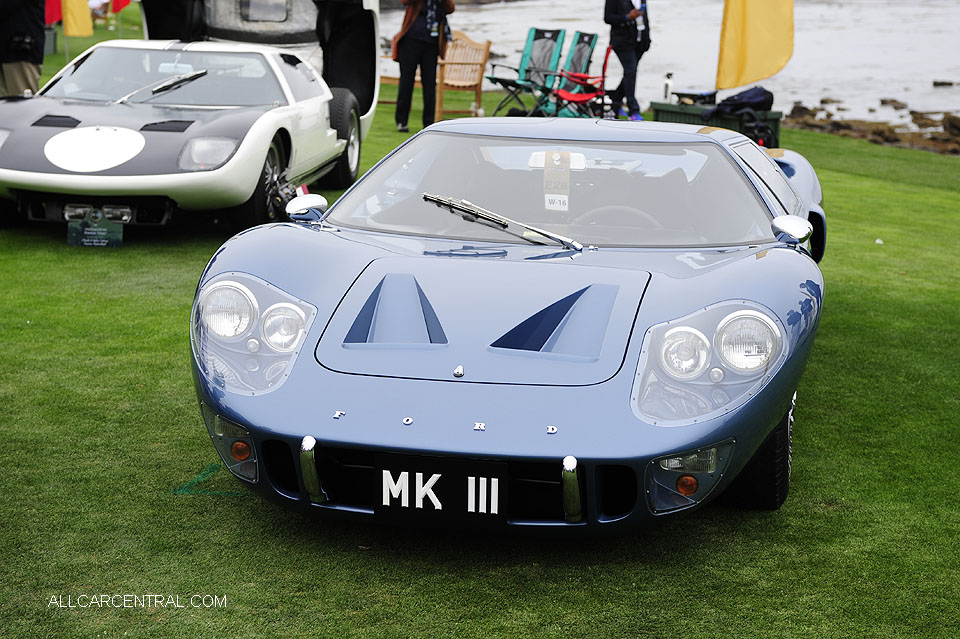
Ford GT40 M3-1101 Mark III 1967
This GT40 Mk III (M3/1101) is the road-going prototype shown at the
1967 New York Auto Show. The car features the distinctive Mk III front
fender with four headlights and the longer alloy rear end that was
bolted onto the standard Mk I body. To add to its image as a road car,
it was also fitted with a luggage box and Borrani wire wheels. Despite
its road-going specification, the car competed for a number of years
in international historic races. A recent restoration has returned the
car to its New York Auto Show appearance.
Source: Pebble Beach Concours d'Elegance

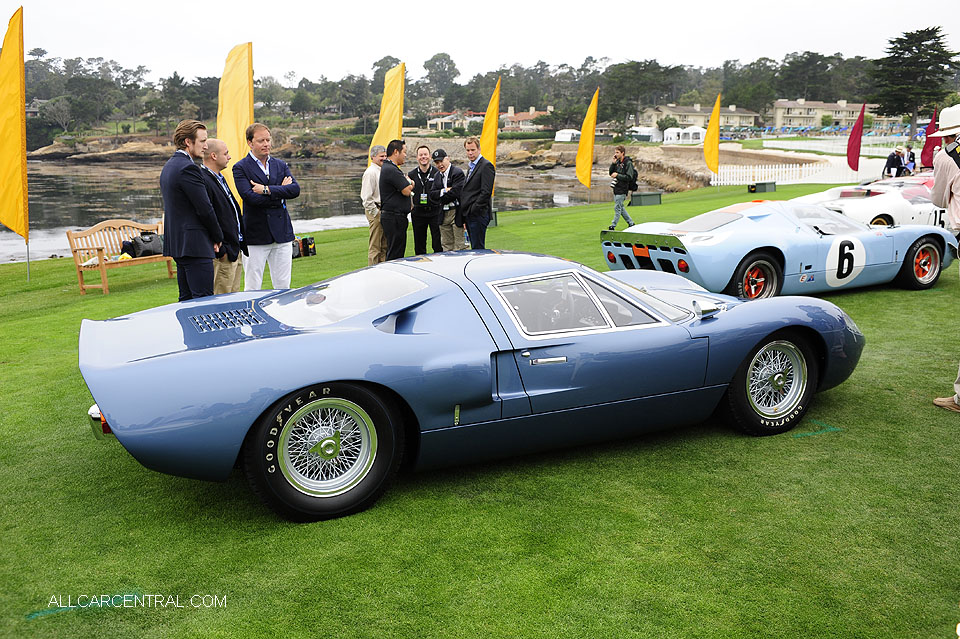
Ford GT40 M3-1101 Mark III 1967

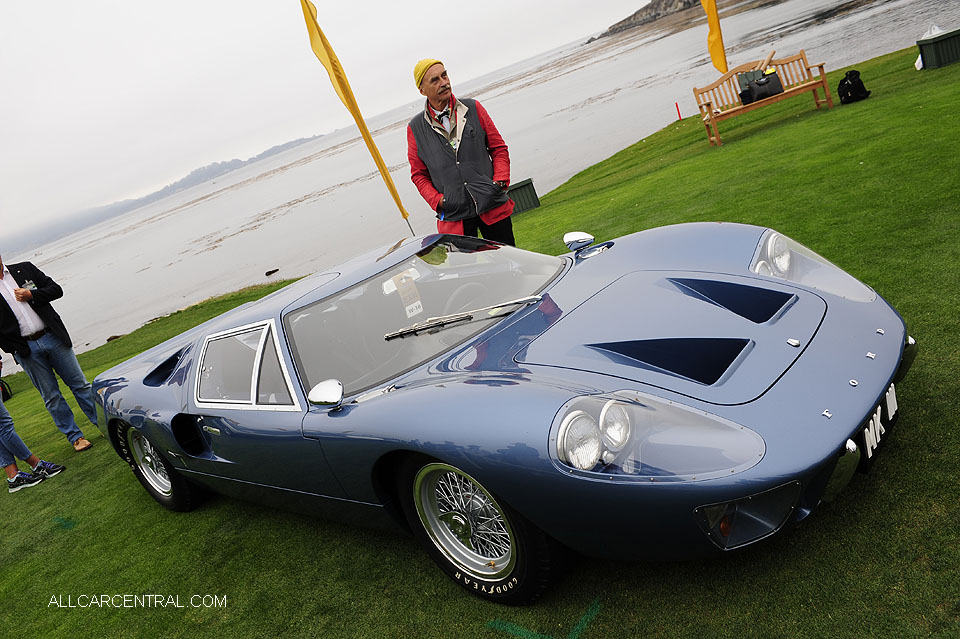
Ford GT40 M3-1101 Mark III 1967

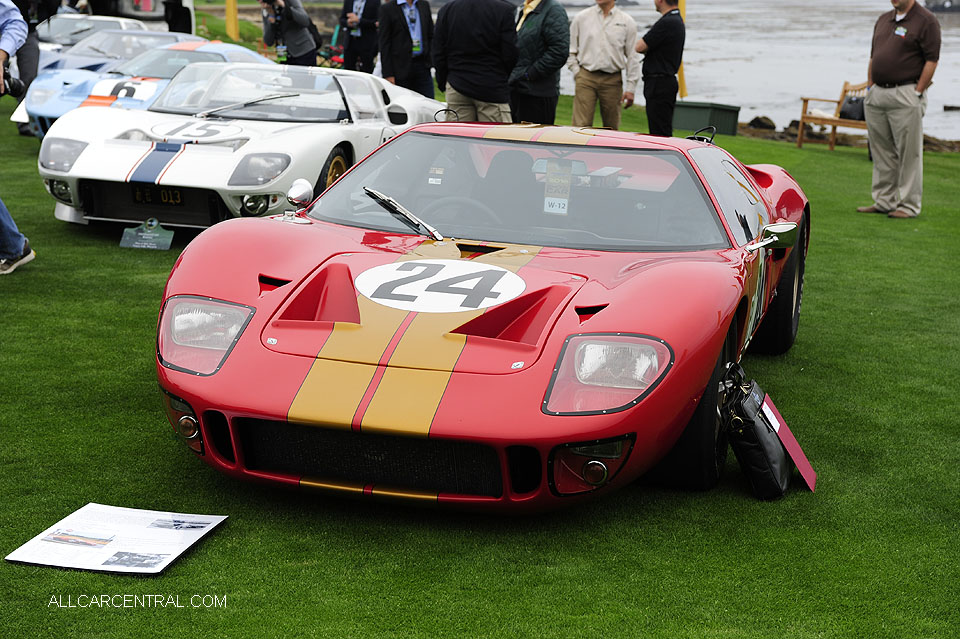
Ford GT40 P AM-GT2 1966
This GT40 (P AM2) is one of the two lightweight GT40s prepared by
Alan Mann Racing in England for the 1966 race season. It debuted at
the 12 Hours of Sebring, driven by Graham Hill and Jackie Stewart,
but did not finish. Despite promising results at Le Mans Trials in
April, Ford ordered Mann to switch to the new 7.0-liter GT40 Mk II.
As a result, this car was sold to GT40 driver Paul Hawkins at the end
of the year. Hawkins modified the car for use in Group 4 races and
it competed all over Europe, recording a multitude of wins—at
Snetterton, Silverstone, Crystal Palace, Auvergne, Zeltweg, Oulton
Park and Nürburgring, to name but a few. It has one of the most
successful race histories of all of the GT40s, and its current owner still
races the car very successfully in historic motoring events.
Source: Pebble Beach Concours d'Elegance

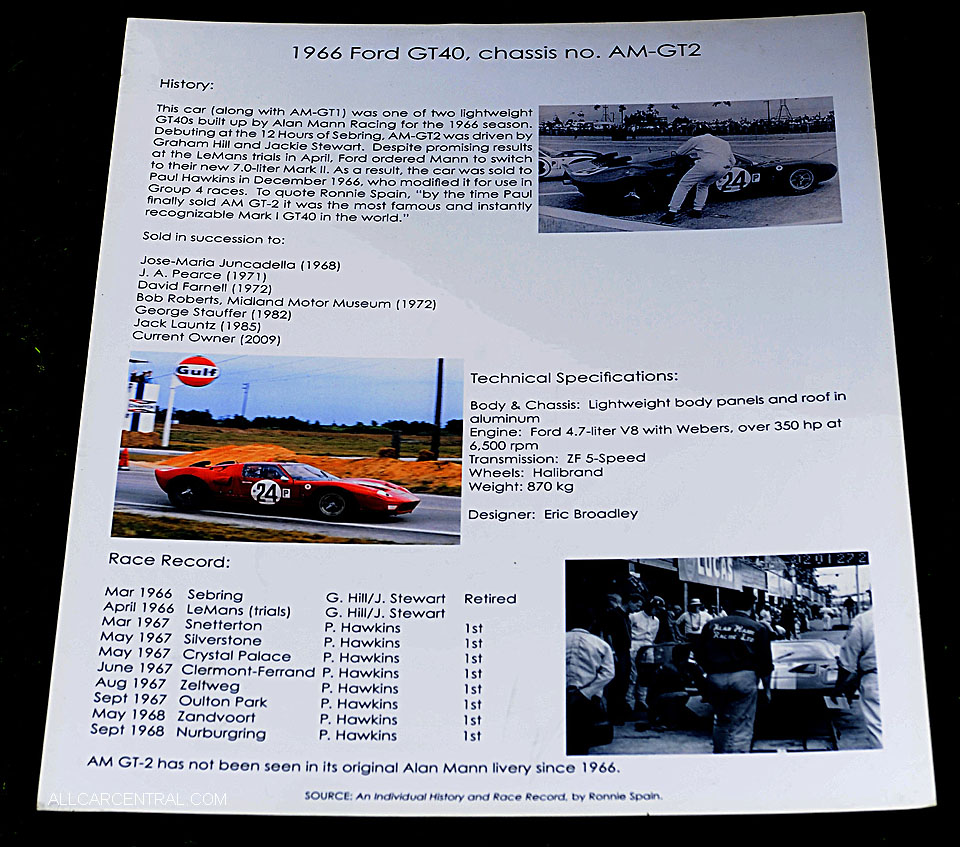
Ford GT40 P AM-GT2 1966

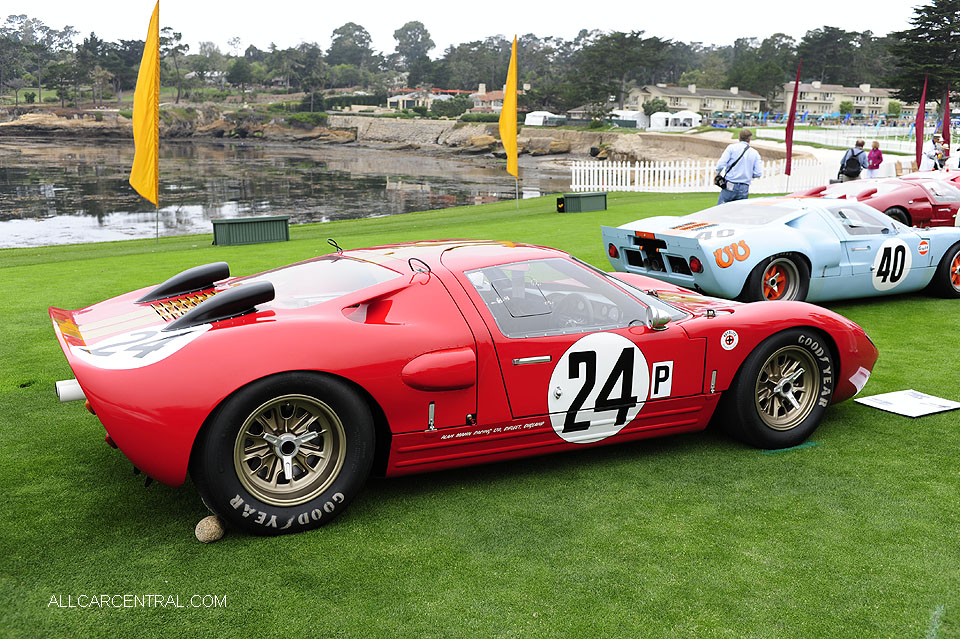
Ford GT40 P AM-GT2 1966

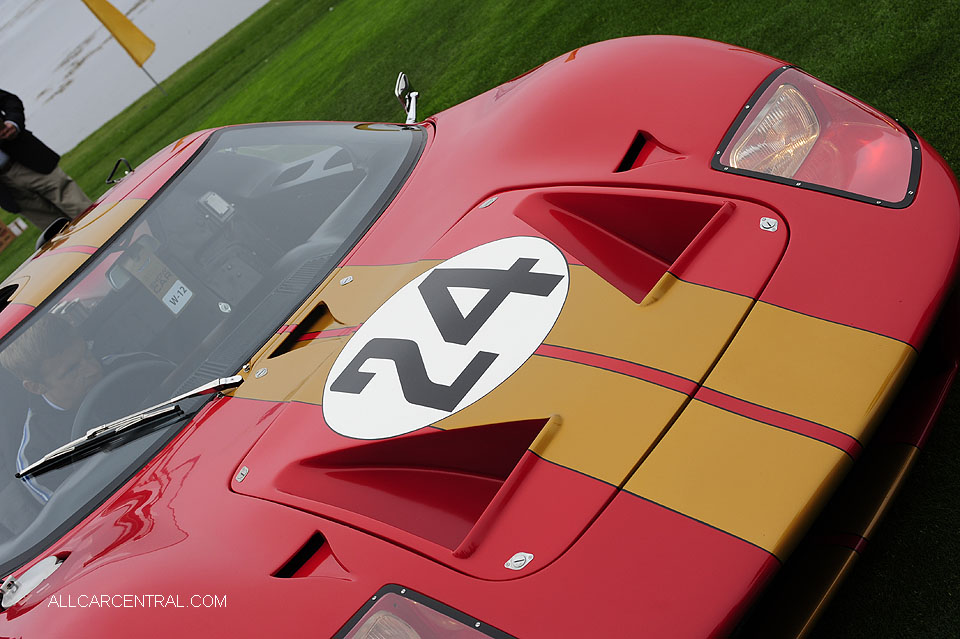
Ford GT40 P AM-GT2 1966

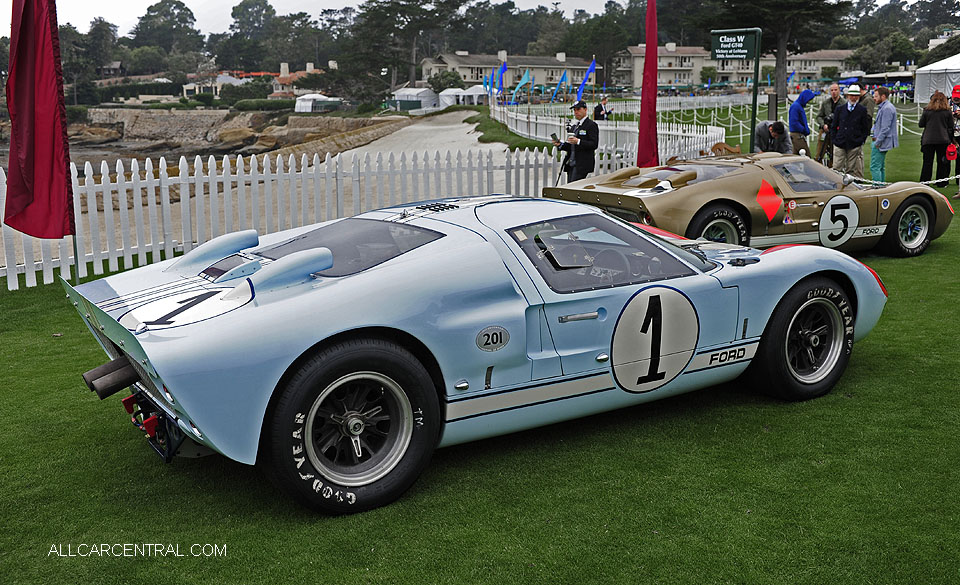
Ford GT40 P-1015 Mark II 1965
This GT40 Mk II (P/1015) took part in the famed 1-2-3 Ford GT40 finish
at Le Mans in 1966. It made a victorious debut at the first 24-hours
race held at Daytona, in February 1966. Following its magnificent
win there, at the hands of Ken Miles and Lloyd Ruby, the car crossed
the Atlantic to compete in the 24 Hours of Le Mans, where Ken Miles,
then partnered with Denny Hulme, hoped to win the long distance
race. This car led the race through many of the closing laps. Then,
following a Ford decision to stage a photo finish, Miles slowed—
and his GT40 crossed the line alongside the GT40 driven by Bruce
McLaren/Chris Amon and ahead of the GTO of Ronnie Bucknum/
Dick Hutcherson. Officially it finished in 2nd because the GT40 driven
by McLaren and Amon had driven farther at that point, having
started farther back. Following Le Mans, this Mk II was raced again
only twice, once again at Daytona where it did not finish and once
again at Le Mans where it crashed. Then it was retired and put into
storage at Holman & Moody
Source: Pebble Beach Concours d'Elegance

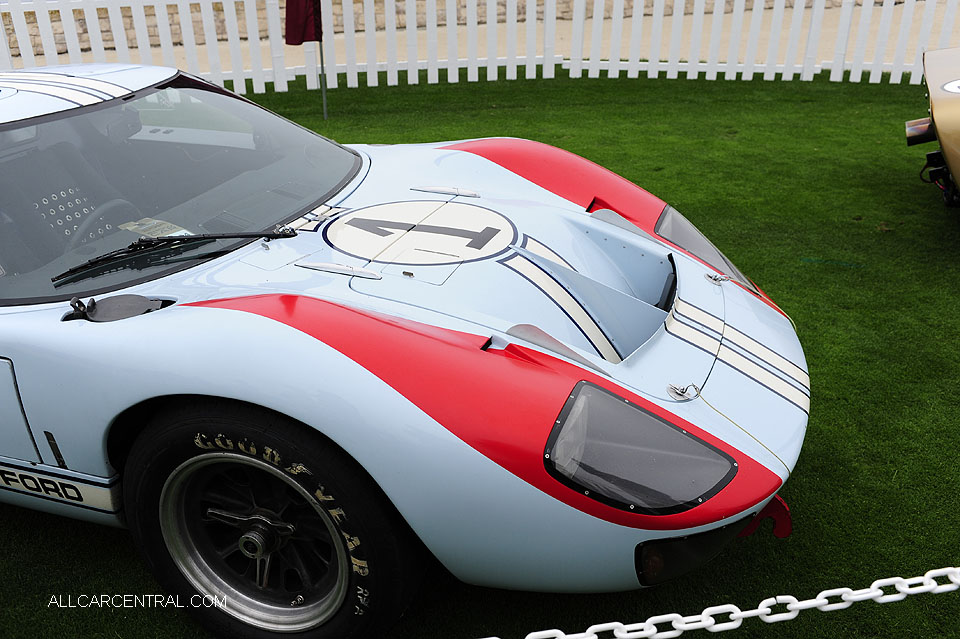
Ford GT40 P-1015 Mark II 1965

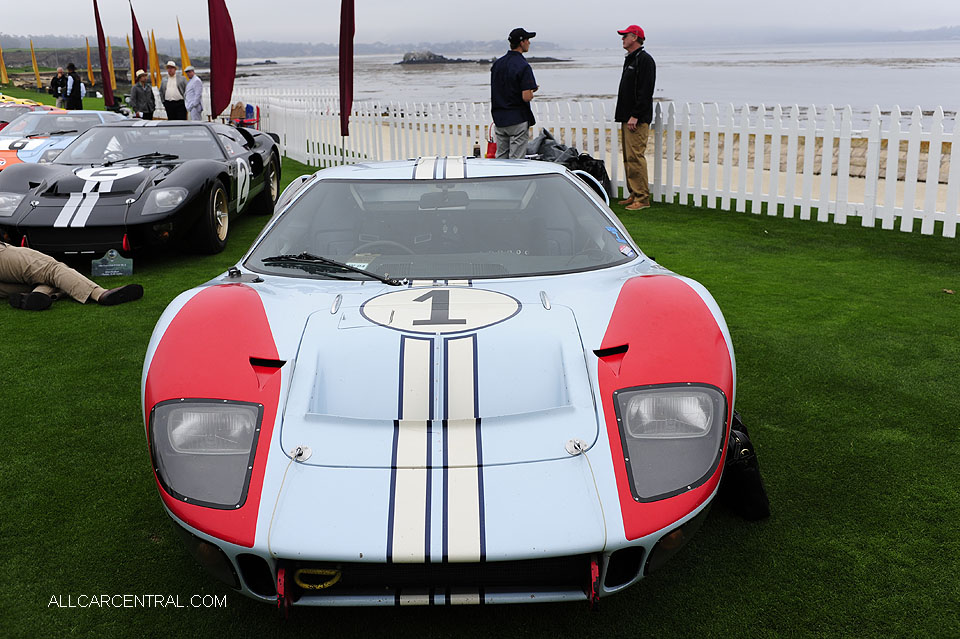
Ford GT40 P-1015 Mark II 1965

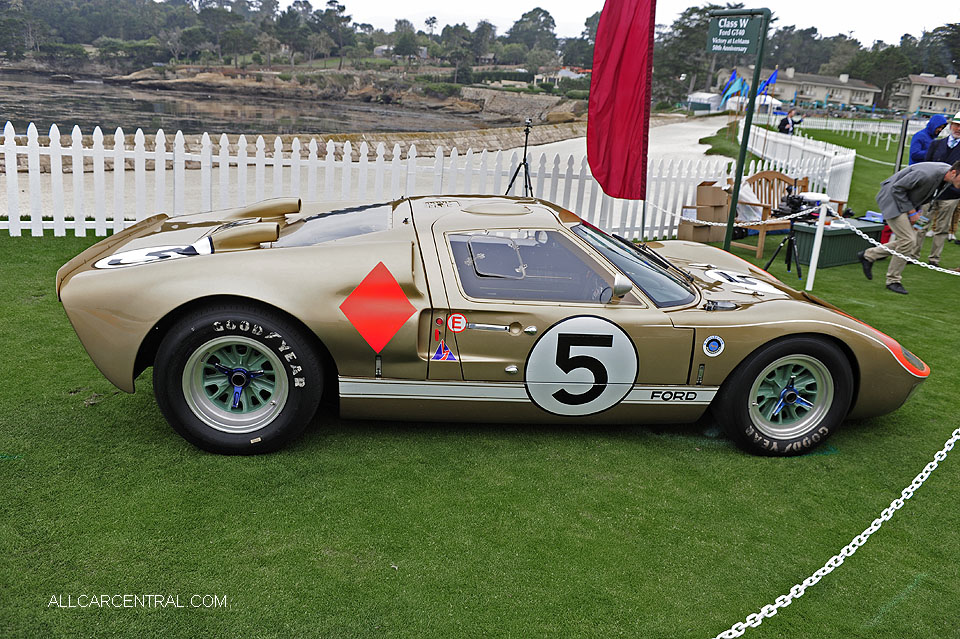
Ford GT40 P-1016 Mark II 1965
This GT40 Mk II (P/1016) was the third car in the triumvirate of GT40s
that ruled Le Mans in 1966, recording a remarkable 1-2-3 finish.
This car was built in 1965 and shipped as a bare chassis to Shelby
American in Los Angeles, where it was completed in January 1966.
That February, driven by Richie Ginther and Ronnie Bucknum, it entered its first race, the 24 Hours of Daytona, but did not finish
due to issues with the gearbox. After racing at Sebring in March and
finishing 12th at the hands of A. J. Foyt and Bucknum, it was handed
over to Holman & Moody, who took it to France for the 24 Hours of
Le Mans in June. This proved to be its finest hour: driven by Ronnie
Bucknum and Dick Hutcherson, it finished a close 3rd to the GT40s
that placed 1st and 2nd in a famed photo finish. Its final race was back
at the 24 Hours of Daytona in 1967, driven by Mark Donohue and
Peter Revson, where gearbox issues led to another DNF. In 1970 the
car was donated to the Harrah Museum in Nevada where it resided
for many years.
Source: Pebble Beach Concours d'Elegance

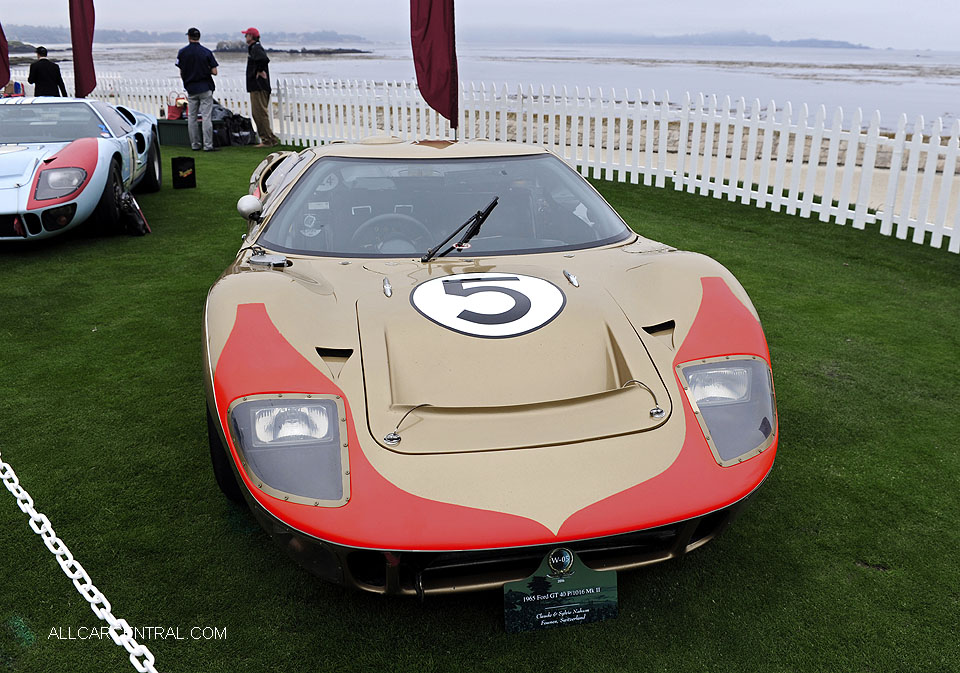
Ford GT40 P-1016 Mark II 1965

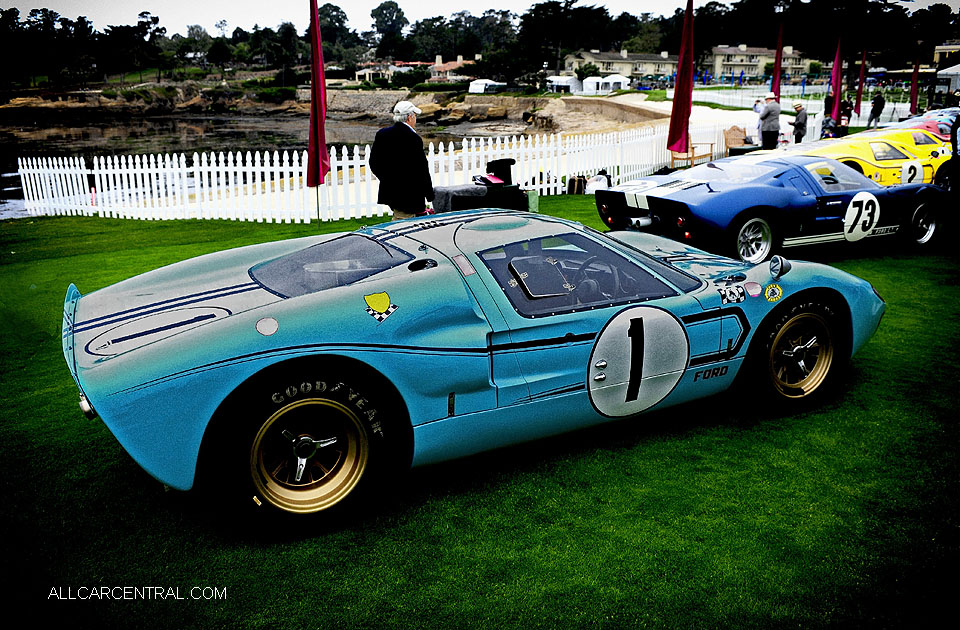
Ford GT40 P-1031-P1047 Mark IIB 1966
This GT40 (P/1031) was delivered to Shelby American in November
1965 and prepared for its first race, the 12 Hours of Sebring in 1966.
With Dan Gurney driving, it led for most of that race, but the engine
blew on the last corner and, breaking the rules, Gurney pushed the
car across the finish line. After racing at Le Mans that June the car
was upgraded to the new Mk IIB specification for the 1967 season,
starting with 24-hour races at Daytona and Sebring. Le Mans was
the next event for drivers Paul Hawkins and Ronnie Bucknum. After
17 hours the car retired with a seized engine. Around this time,
official Ford records show that P/1031 changed identity and
became P/1047. Although the reason is unclear, many race car
identities were swapped due to accidents or matters related
to race registration. Whatever the case, two weeks later, Ford of
France entered this car in the 12 Hours of Reims, where it finished
in 1st place, driven by Jo Schlesser and Guy Ligier. This was the final
win for a GT40 Mk II and the only win for a Mk IIB. After several more
races, concluding with the race at Montlhéry, the car was retired. The
car has been carefully preserved ever since.
Source: Pebble Beach Concours d'Elegance

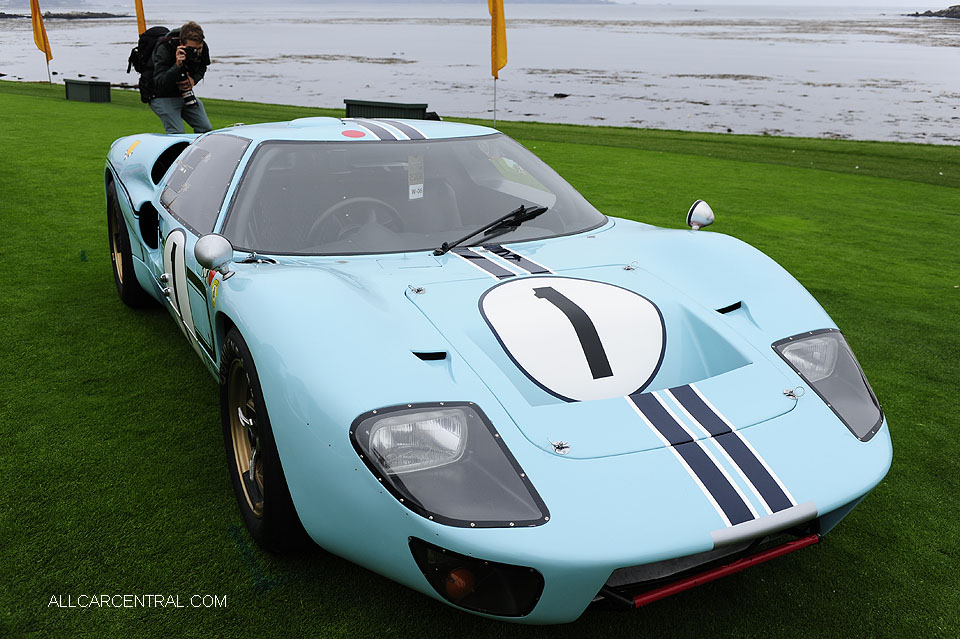
Ford GT40 P-1031-P1047 Mark IIB 1966

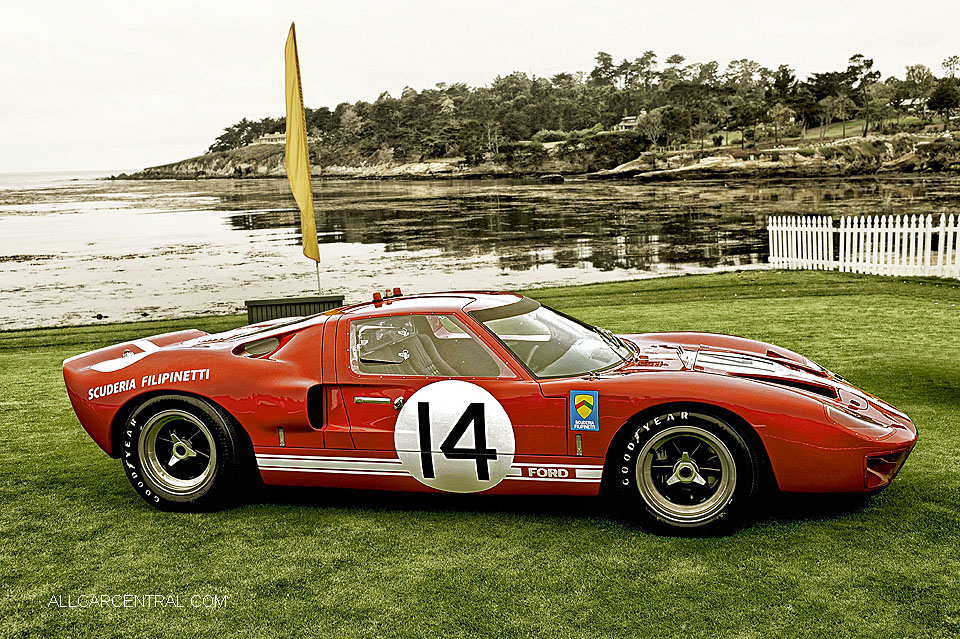
Ford GT40 P-1040 Mark I 1966
This GT40 Mk I (P/1040) is the Scuderia Filipinetti team car, one of six
GT40s originally built with long-distance Le Mans modifications. It
was sold to Filipinetti immediately after being tested at Goodwood
on February 23, 1966. After the Le Mans Trials in April, this car first
raced at Monza, where it finished 3rd driven by Willie Mairesse
and Herbert Muller. At Le Mans in June 1966, it was running in 5th
position, behind the winning trio of GT40s, before crashing in the
16th hour. After it was repaired at Ford Advanced Vehicles, its last race
was again at Monza in 1967, where it sadly caught fire, ending its
racing career. The car has recently been restored to its 1966 Le Mans
configuration.
Source: Pebble Beach Concours d'Elegance

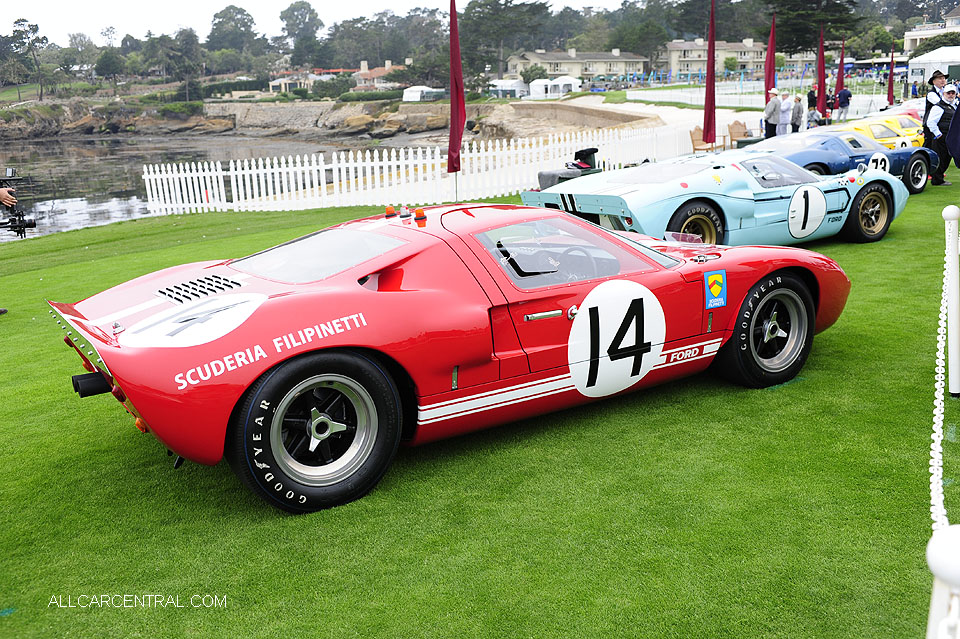
Ford GT40 P-1040 Mark I 1966

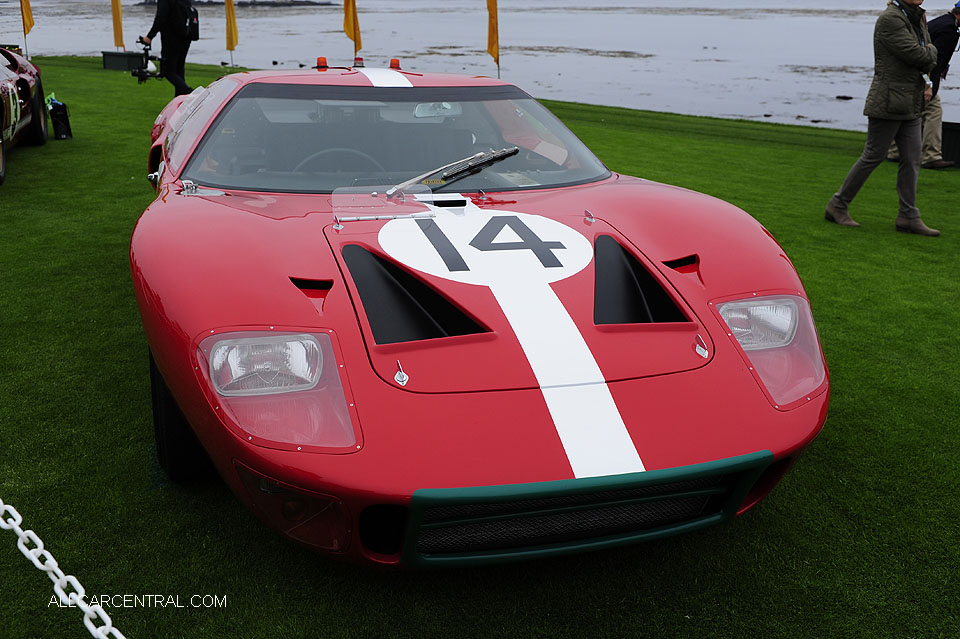
Ford GT40 P-1040 Mark I 1966

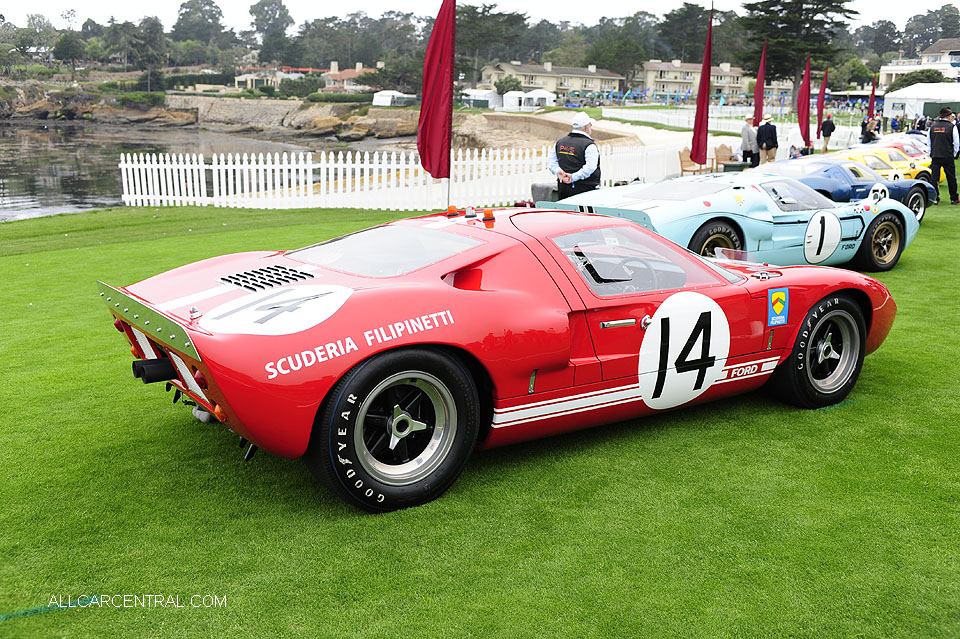
Ford GT40 P-1040 Mark I 1966

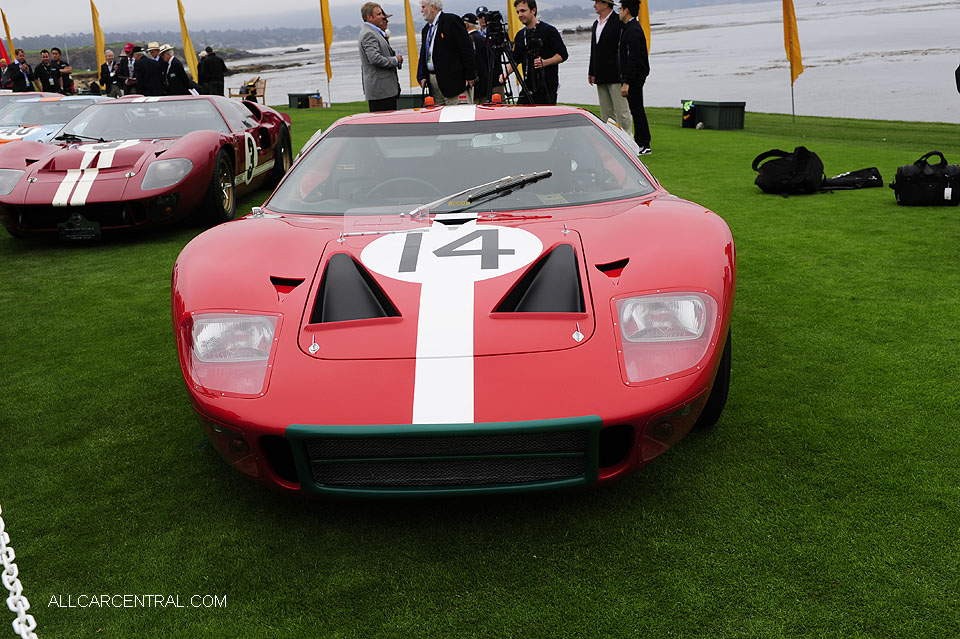
Ford GT40 P-1040 Mark I 1966

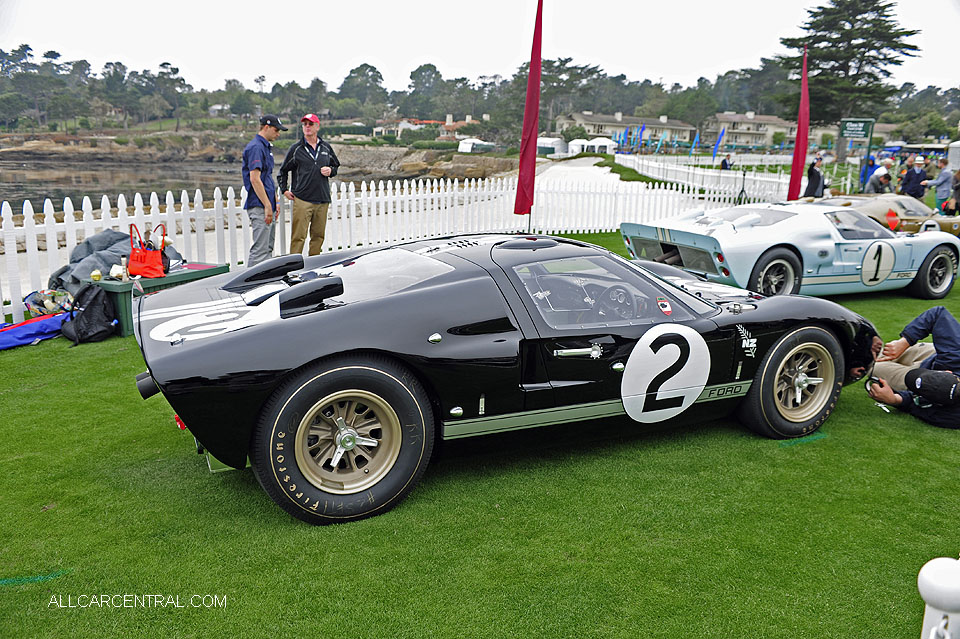
Ford GT40 P-1046 Mark II 1966
This GT40 Mk II (chassis P/1046), driven by Bruce McLaren and Chris
Amon, placed first at the 24 Hours of Le Mans in 1966, leading
two other GT40s across the line for the famous 1-2-3 photo finish.
Following its memorable win, the car passed to Holman & Moody
and was entered in the 24 Hours of Daytona in 1967, driven by Lloyd
Ruby and Denny Hulme. After running amongst the race leaders,
Ruby crashed on his 300th lap and P/1046’s racing days were over.
Once repaired, this famous car was shipped around the United
States as part of a Ford marketing tour. It was later rebuilt as a roadgoing supercar, complete with a gold metal-flake paint job. Its new
owner has now, thankfully, restored the car to its 1966 Le Man–
winning configuration.
Source: Pebble Beach Concours d'Elegance

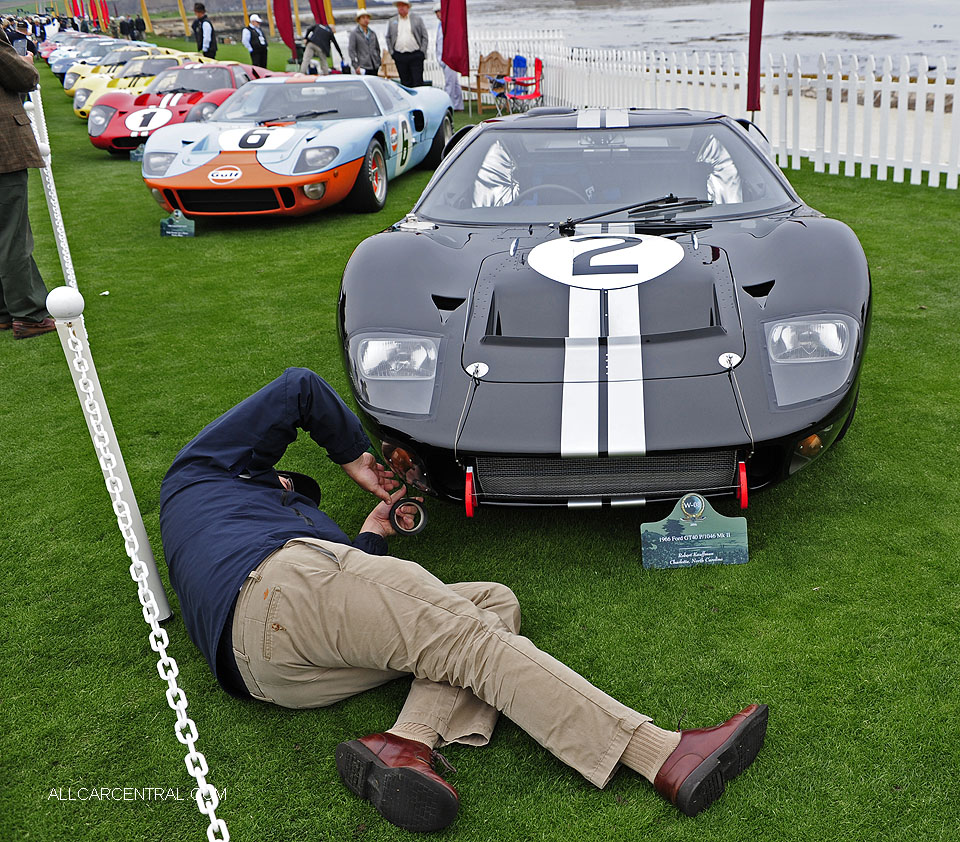
Ford GT40 P-1046 Mark II 1966

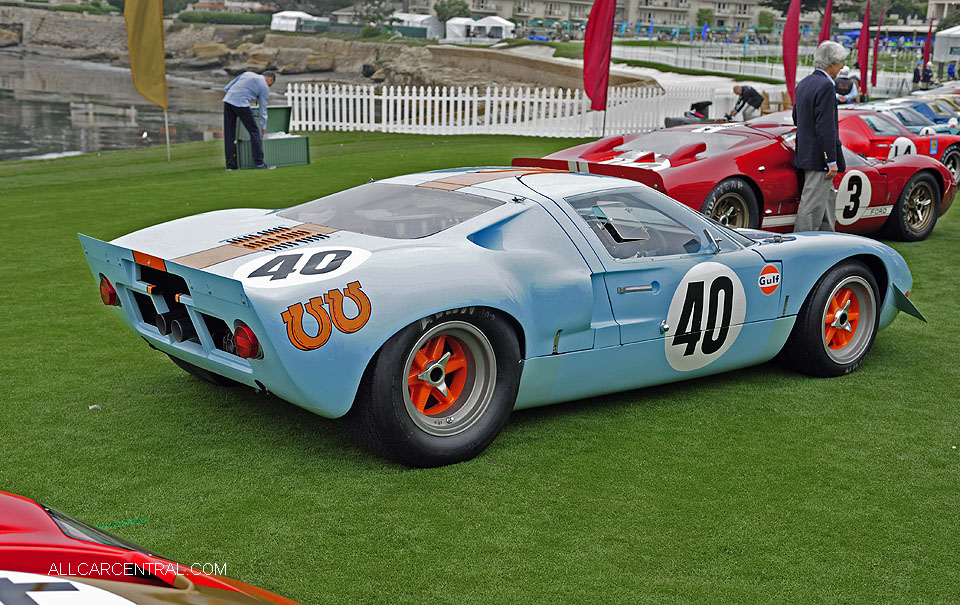
Ford GT40 P-1074 Mirage M.10003 1968
This GT40 began life as a Mirage (chassis number M.10003) and
made its debut at the Spa 1000 km race in May 1967. Driven by Jacky
Ickx and Dick Thompson, the car finished first overall, recording
the first win for a sports car in the now legendary blue and orange
Gulf livery. Following FIA’s regulation change for the 1968 season,
limiting prototype engine size to 3-liters and 5-liters for Group 4 cars,
the Mirage was converted by J.W Automotive into a Group 4 GT40.
This work was completed in February 1968 and the car was then
assigned chassis number P/1074. It was the first of three lightweight
racing GT40s built for the J.W.A./Gulf team. After several races, it ran
in the Le Mans Trials with Jacky Ickx, who set a 3-minute 35.4-second
lap record. This car also became a film star of sorts when it was used
as a camera car in the Steve McQueen film Le Mans.
Source: Pebble Beach Concours d'Elegance

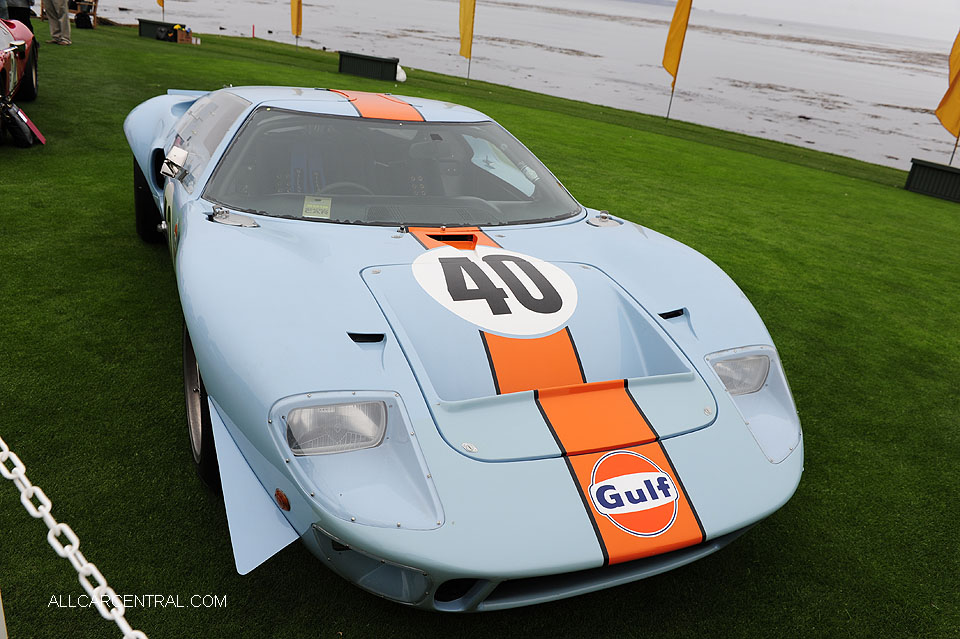
Ford GT40 P-1074 Mirage M.10003 1968

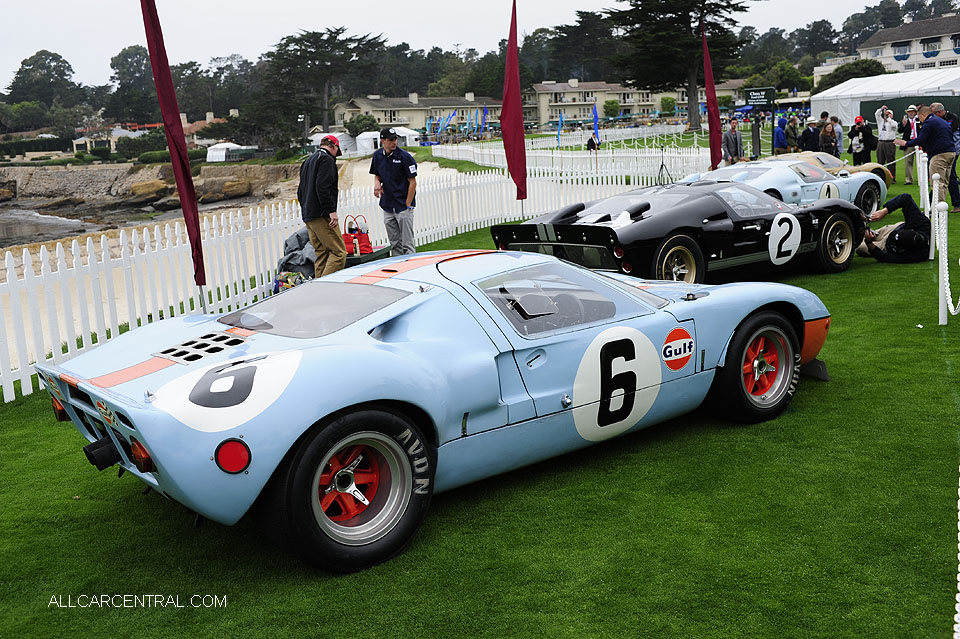
Ford GT40 P-1075 1968
This Ford GT40 (P/1075) is one of the most important GT40s ever
built, having won the 24 Hours of Le Mans in 1968 and 1969. It is
one of only two race cars in history to record consecutive wins there.
For the 1968 Le Mans race, the regulations were changed and a 3-liter
limit was imposed on all prototypes, eliminating the 427-cubic-inch
Ford engines. Fortunately, the team at J.W. Automotive Engineering,
under the direction of John Wyer, saw the potential of the GT40 as
a Group 4 sports car, and they built two lightweight GT40s with
carbon-fiber reinforced bodywork that was virtually identical to the
original GT40 Mk I. As a result, this car, driven by Pedro Rodriguez
and Lucien Bianchi, scored a resounding win at Le Mans in 1968.
With the GT40 win, Ford was again at the top—and, incredibly, this
GT40 repeated its Le Mans win in 1969 driven by Jacky Ickx and
Jackie Oliver.
Source: Pebble Beach Concours d'Elegance

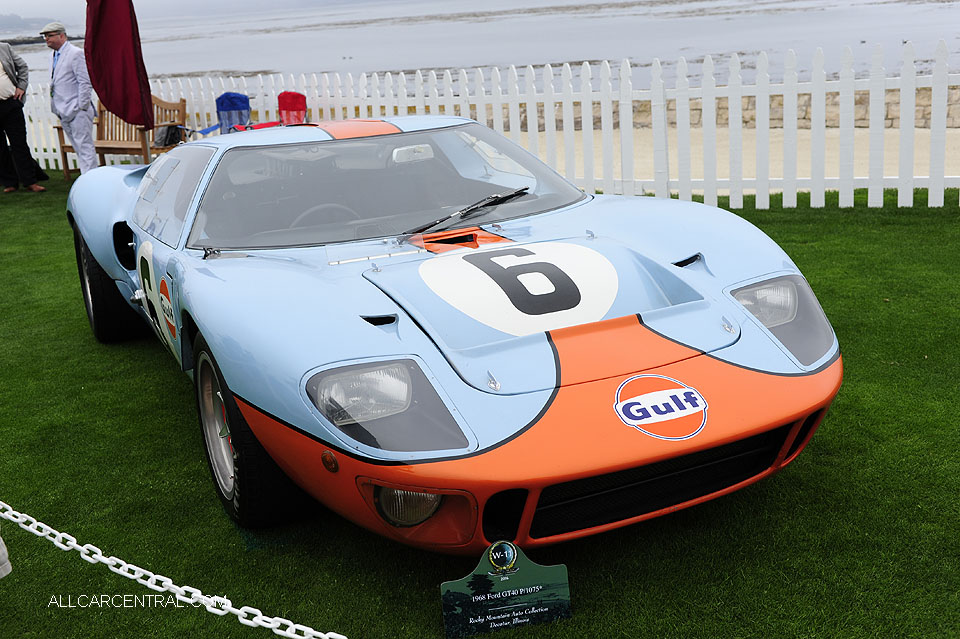
Ford GT40 P-1075 1968

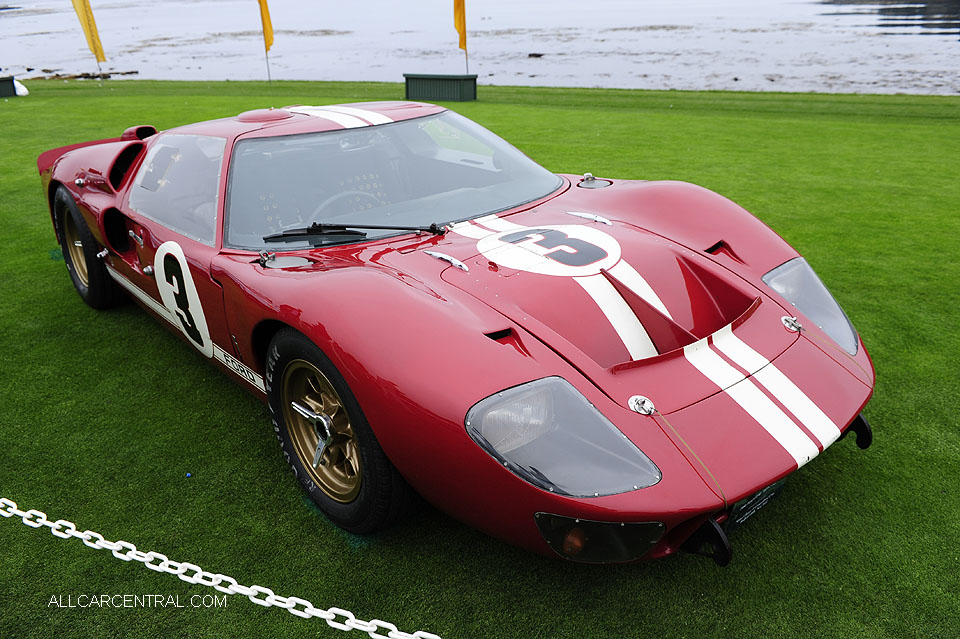
Ford GT40 XGT-3 Mark II 1966
This 1966 GT40 (XGT-3), one of thirteen GT40 Mk IIs, is possibly the
most original GT40 in the world. The main reason it has retained its
original body work is that it is the only Mk II never to have raced in
period. It is one of the three Alan Mann Lightweights built with an
aluminum monocoque chassis, and it played an important role as
a spare car for the 24 Hours of Le Mans in 1966—but it was never
used. It still retains its original tachometer correction tag installed
by Ford on all of the 1966 Le Mans cars. After that race the car
returned to the United States and was taken around the country
on Ford’s press tour, celebrating their famous Le Mans win. The car
was also featured by Ford in their Autolite Spark Plug advertising of
the period. Although it never raced in period, XGT-3 has been raced
occasionally in historic events both in the United States and Europe.
Source: Pebble Beach Concours d'Elegance

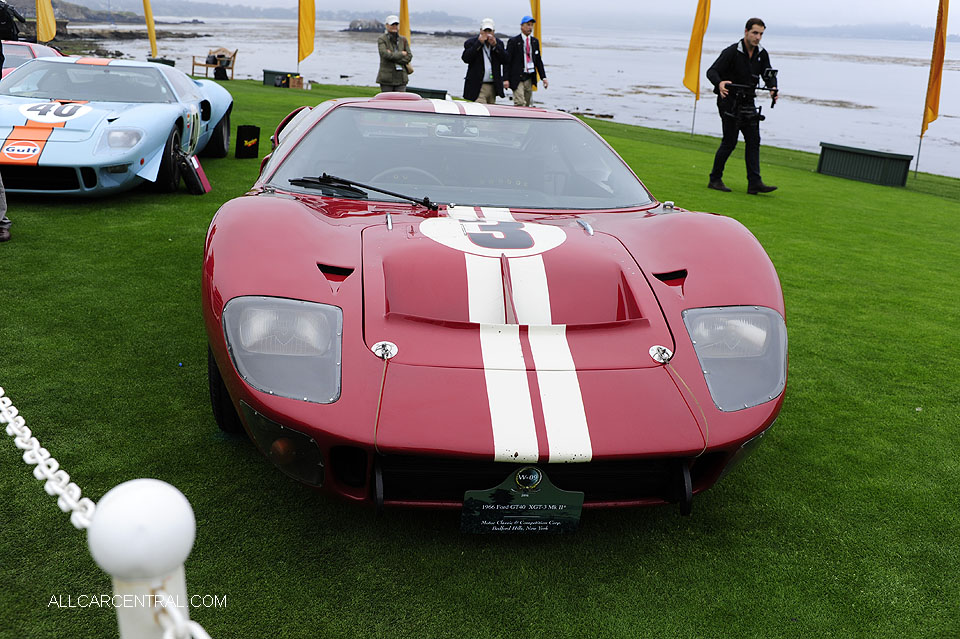
Ford GT40 XGT-3 Mark II 1966

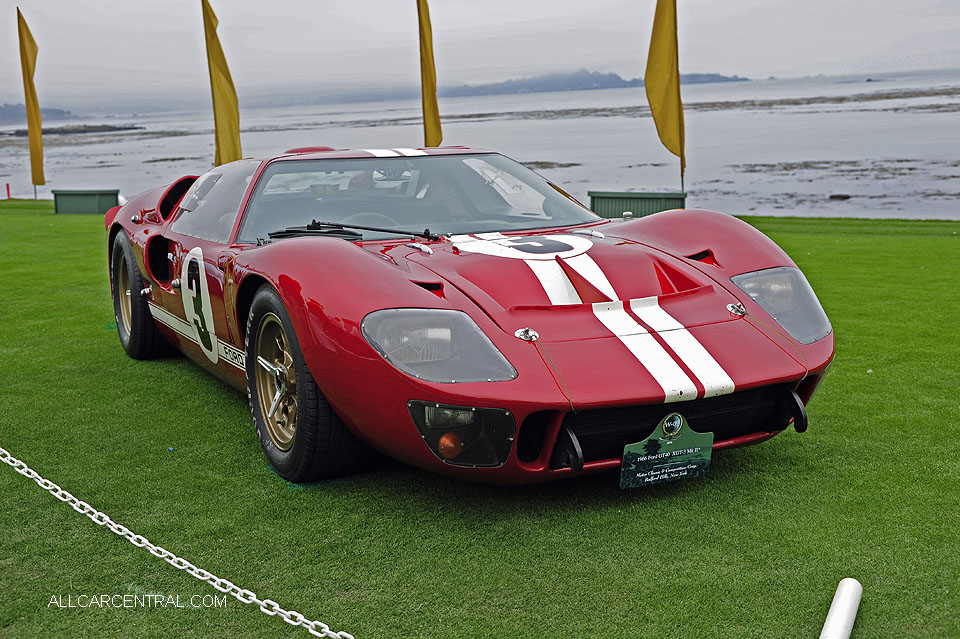
Ford GT40 XGT-3 Mark II 1966

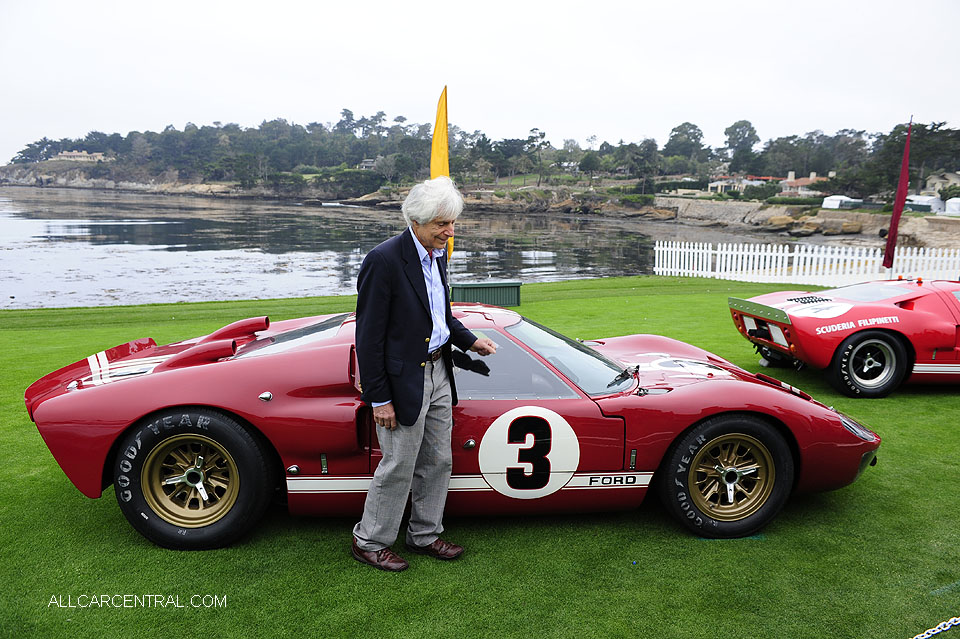
Ford GT40 XGT-3 Mark II 1966

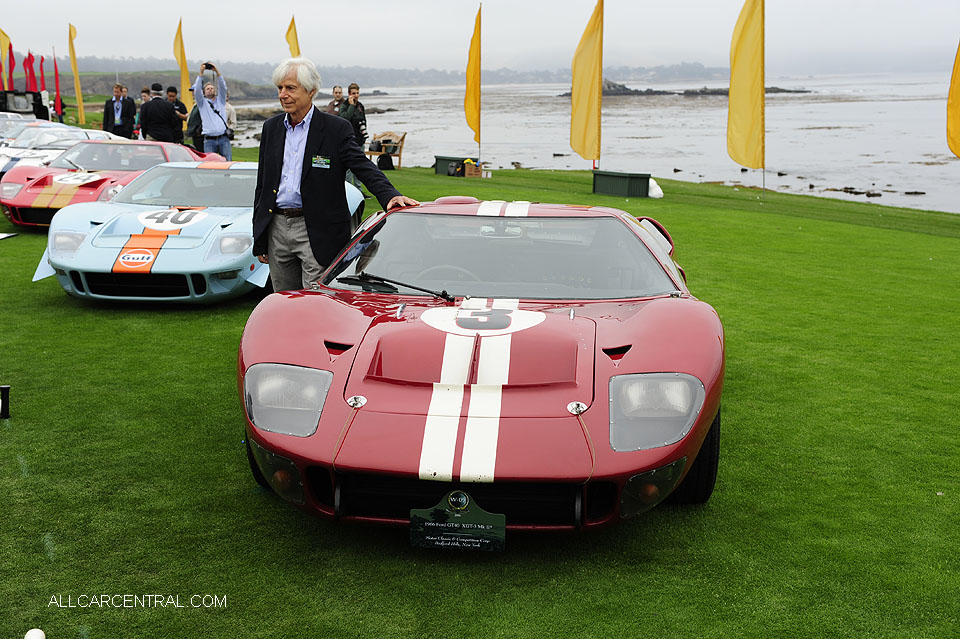
Ford GT40 XGT-3 Mark II 1966

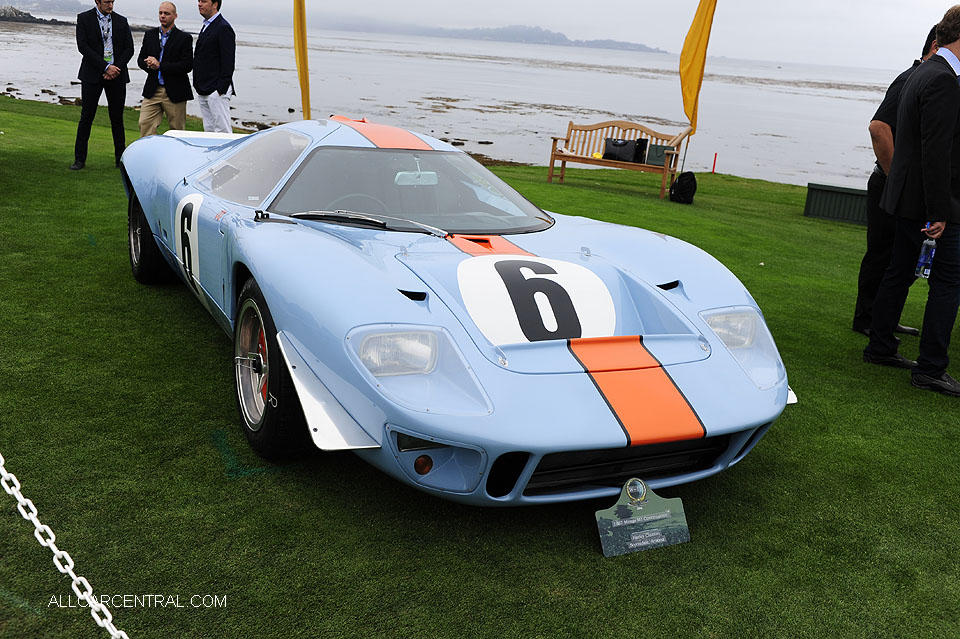
Ford Mirage M1 Continuation 1967

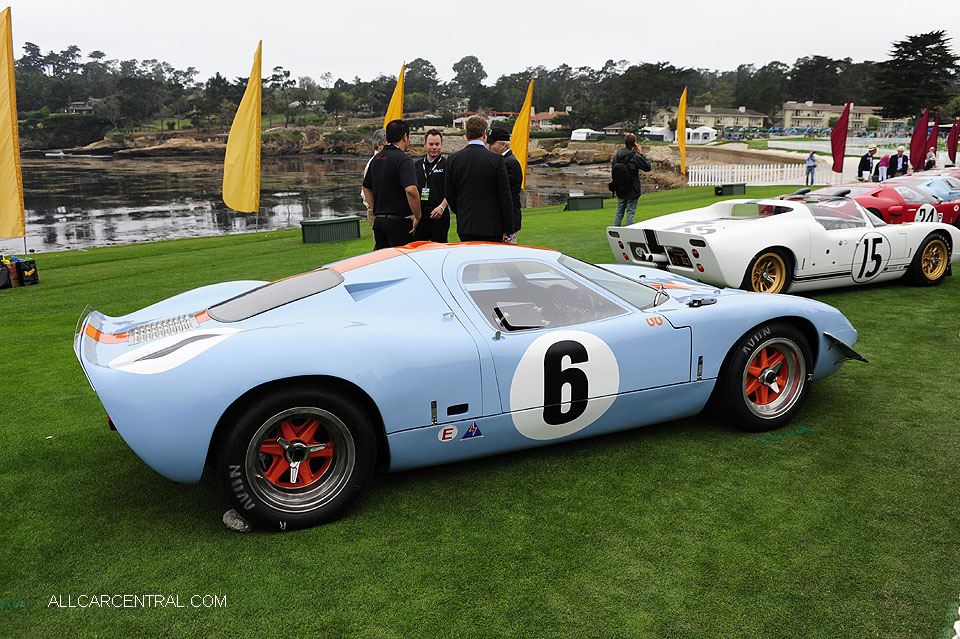
Ford Mirage M1 Continuation 1967

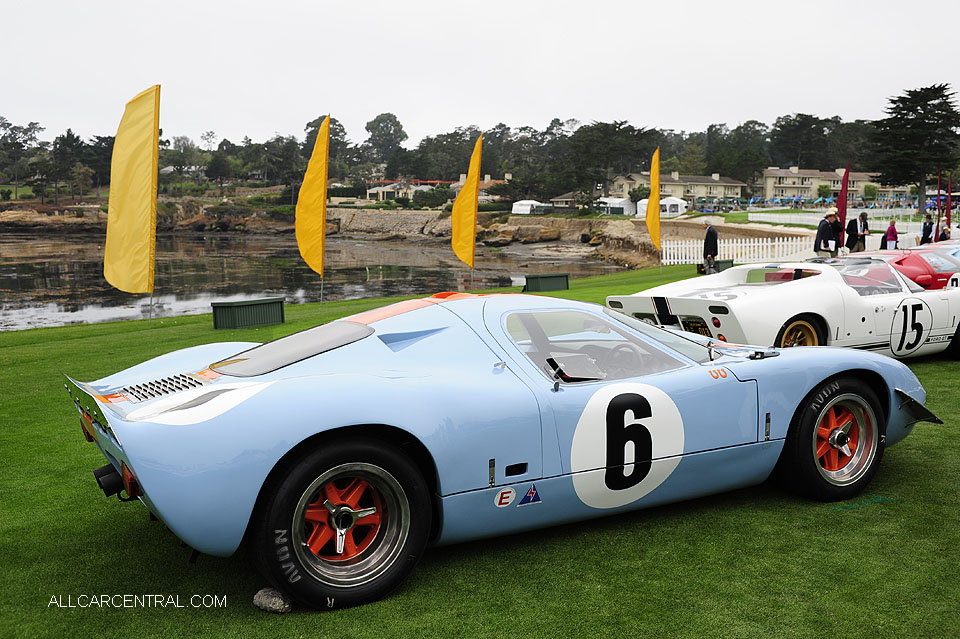
Ford Mirage M1 Continuation 1967

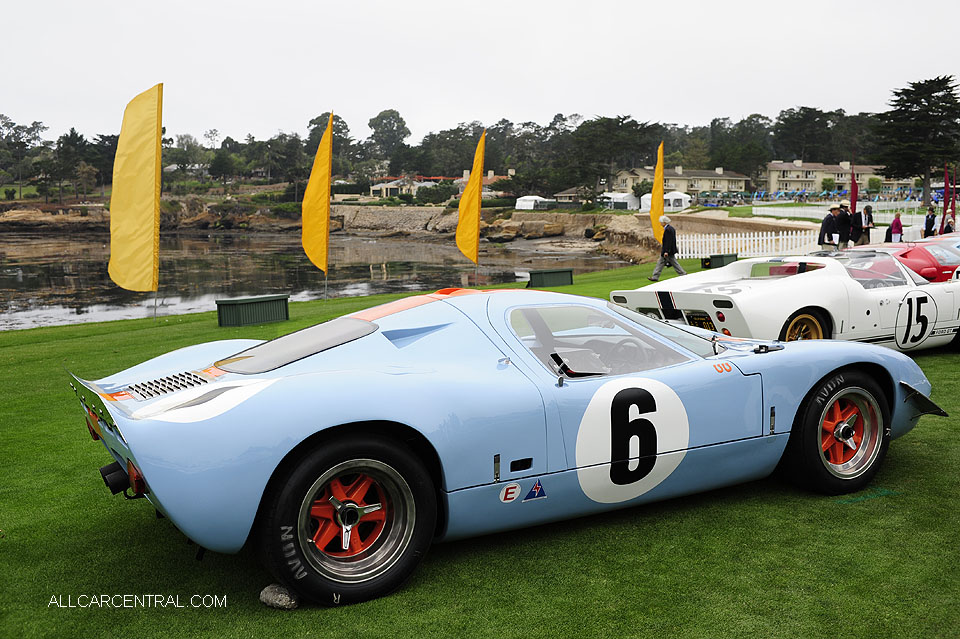
Ford Mirage M1 Continuation 1967
All Cars • • Racing • • VINTAGE • • Shows • • Gallerys • • Contact
